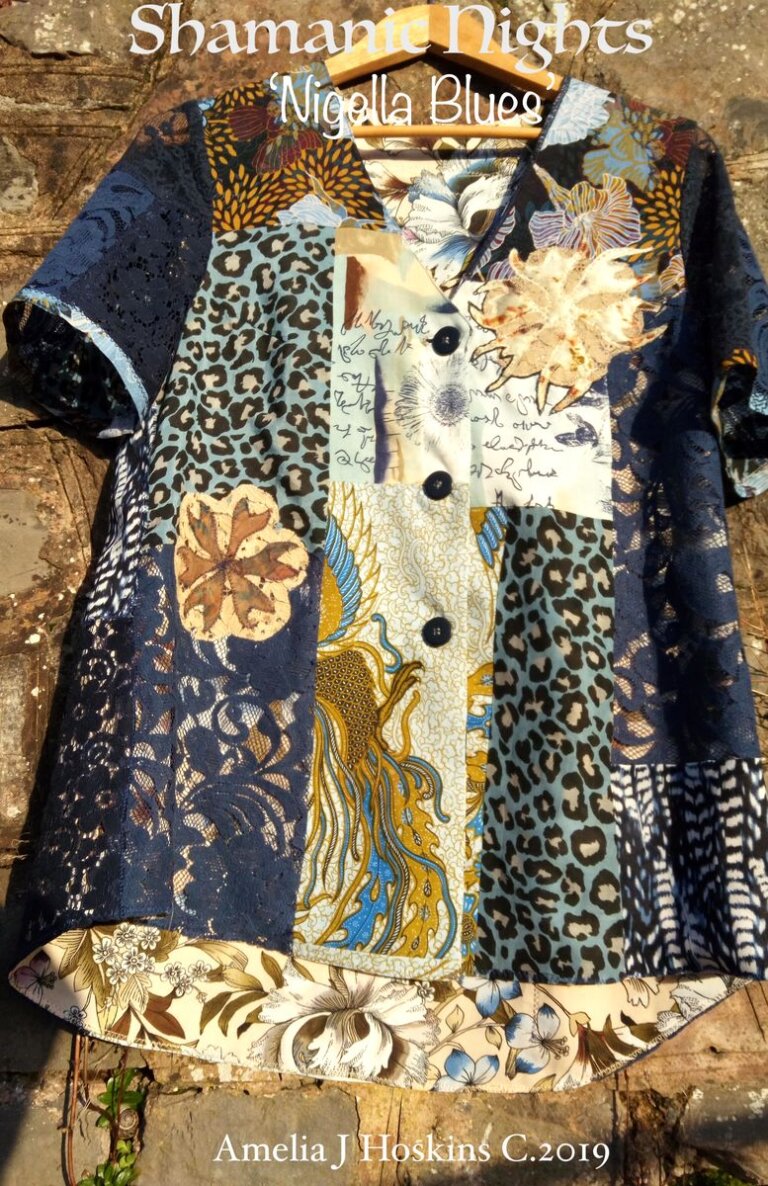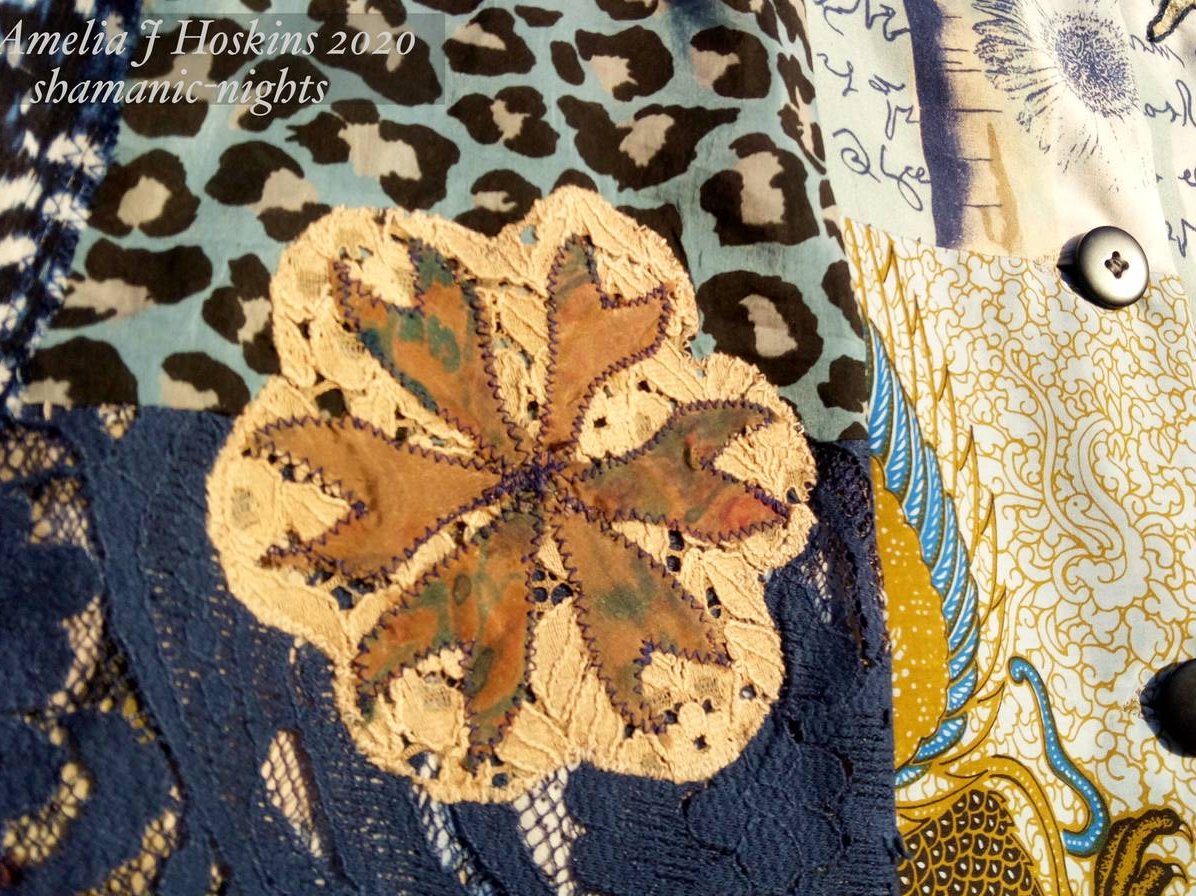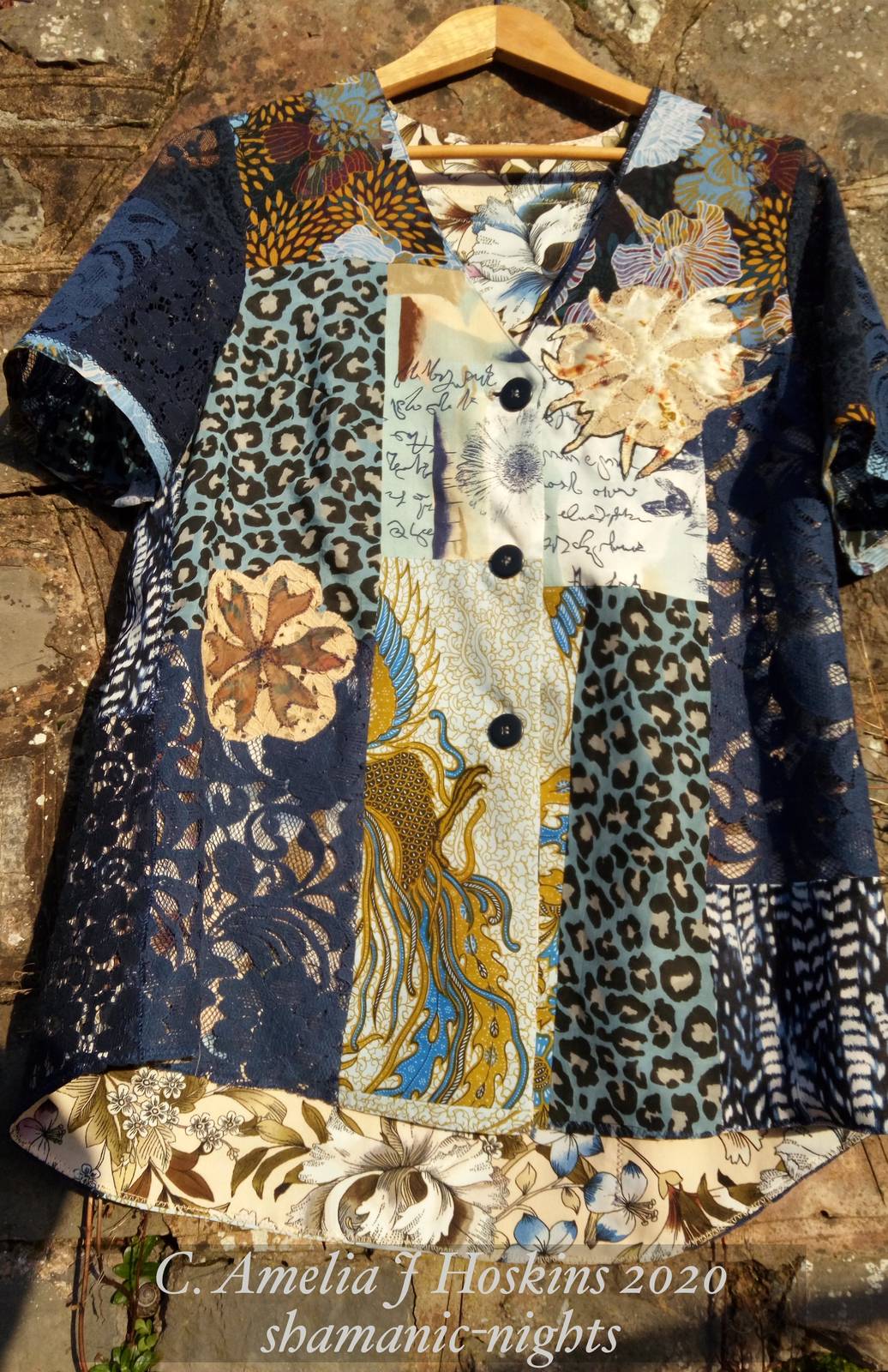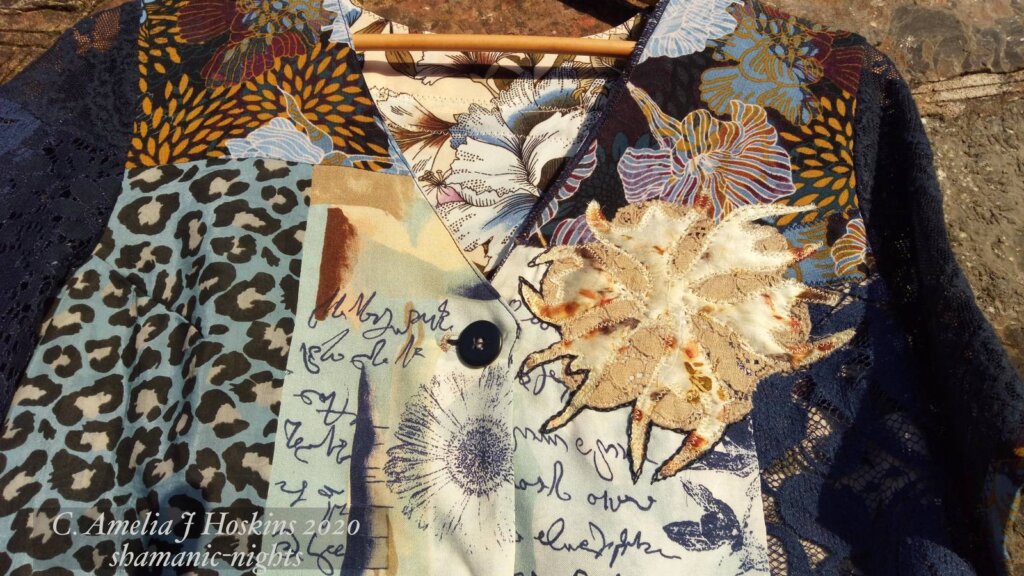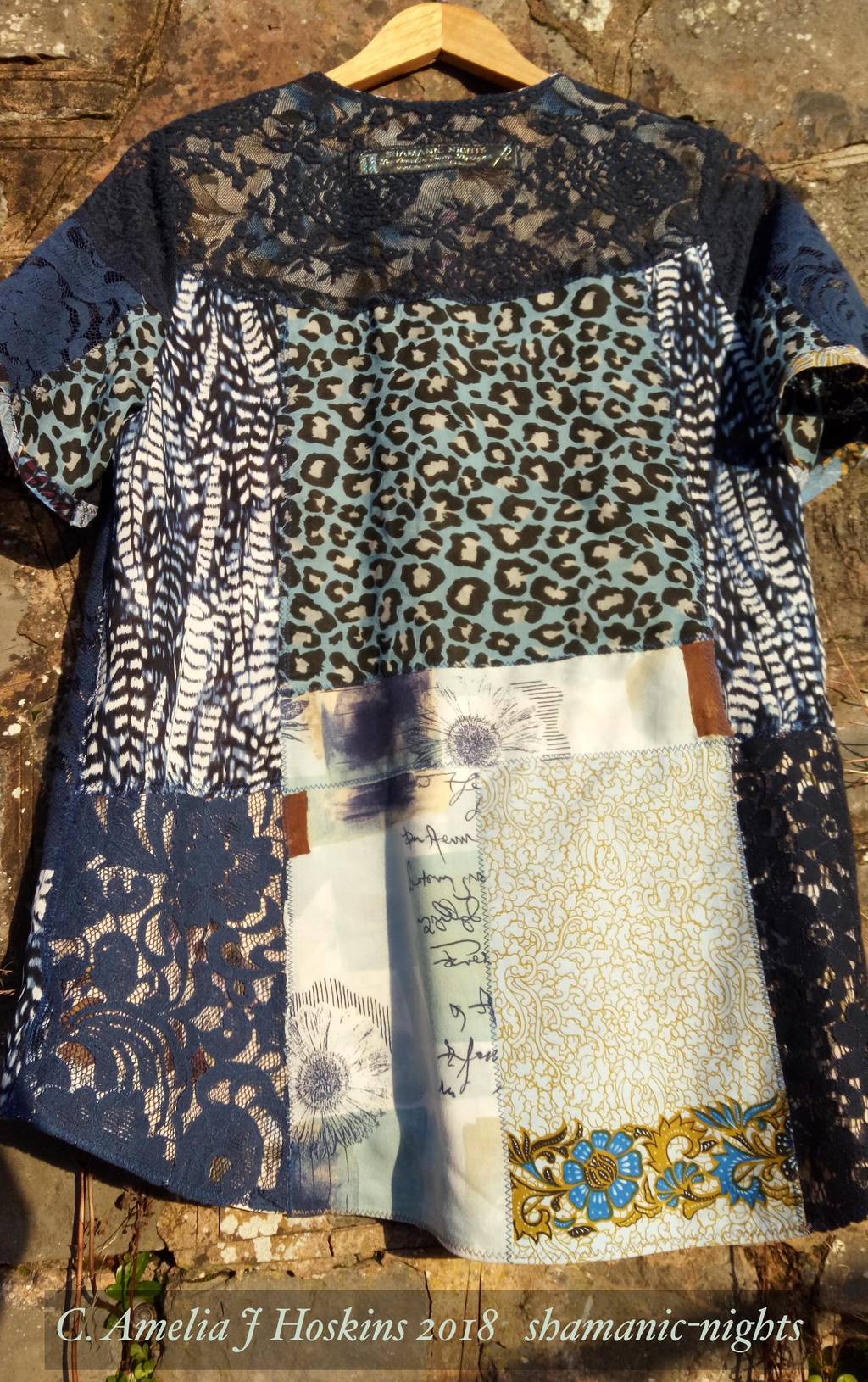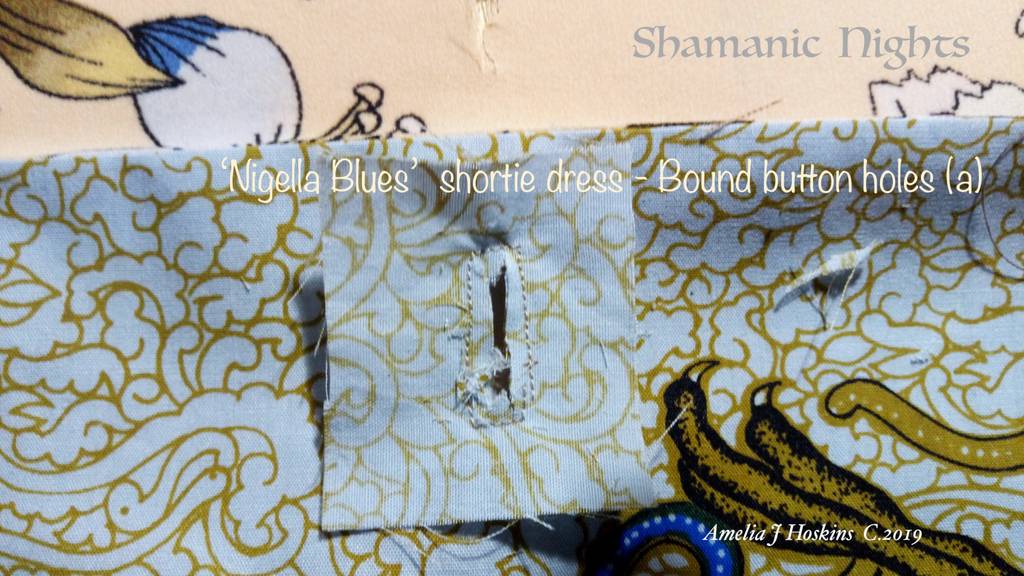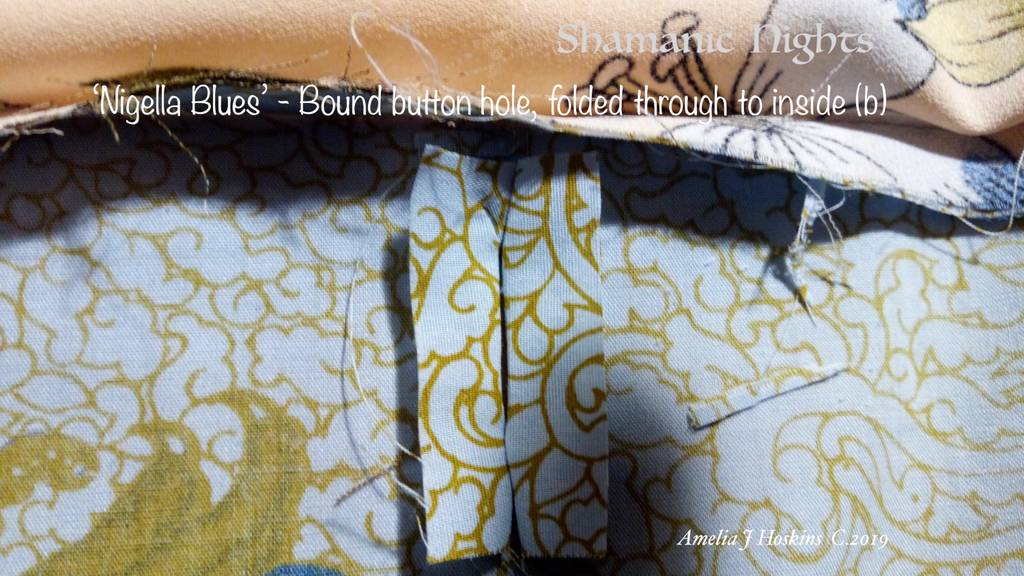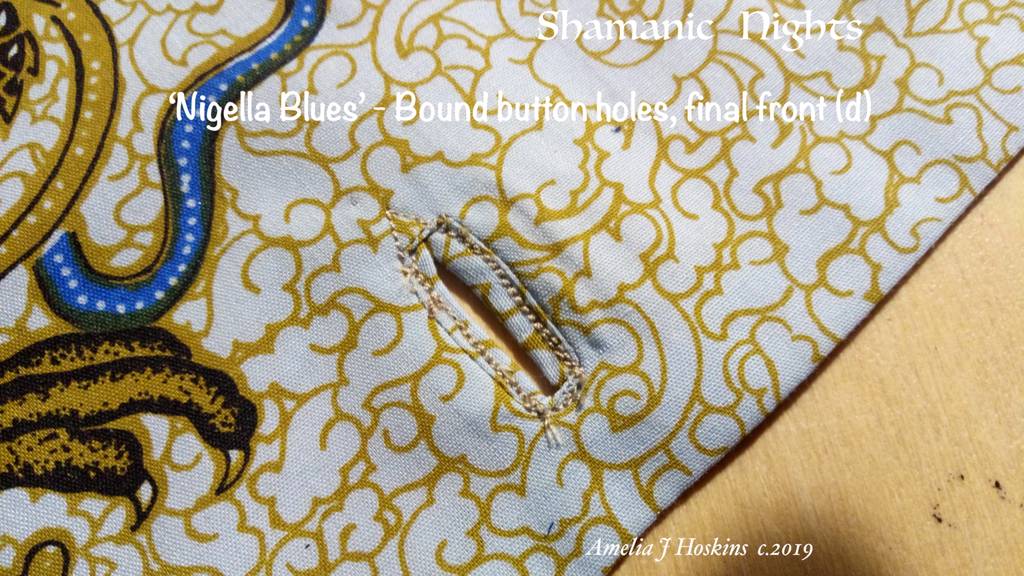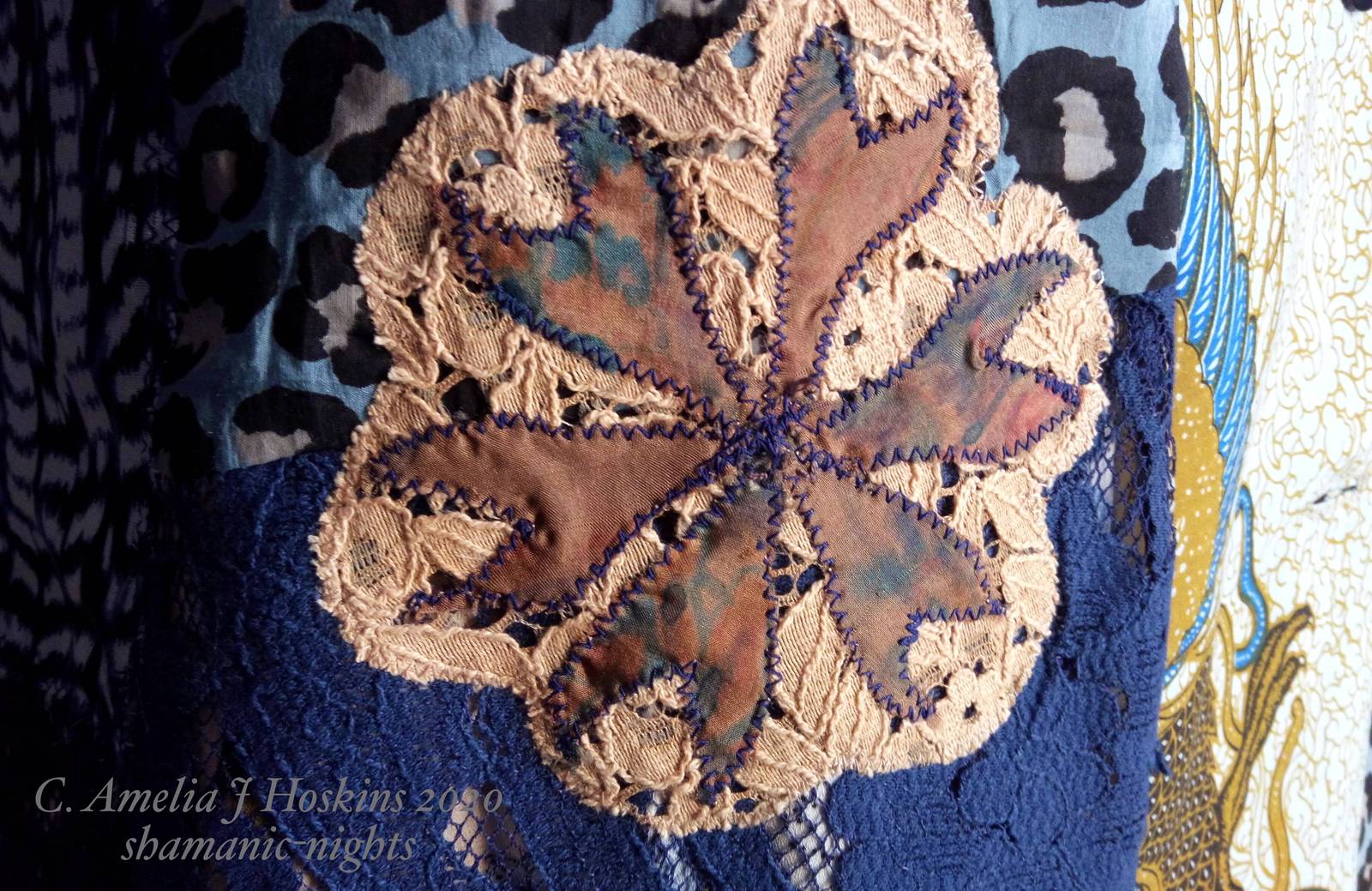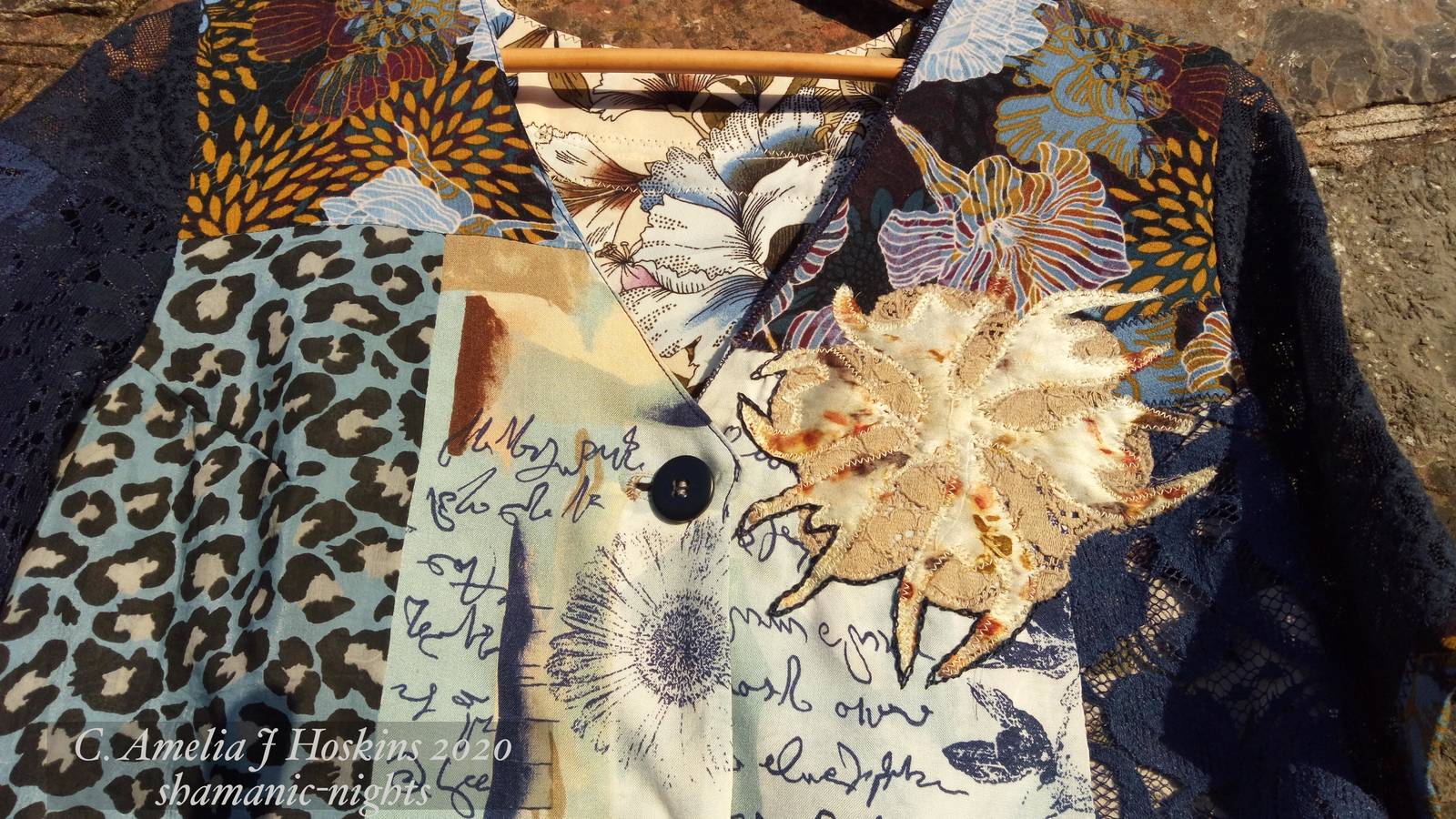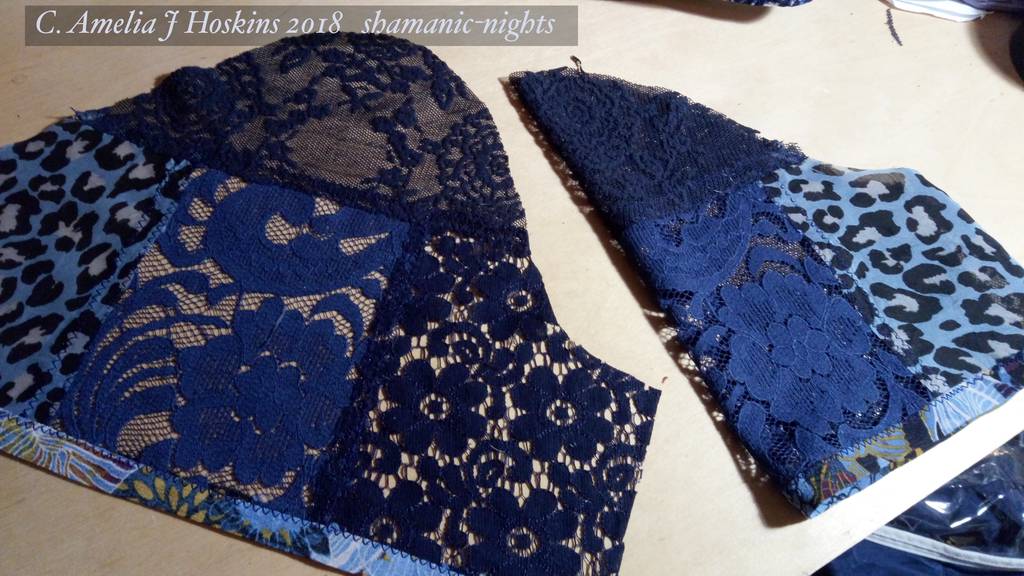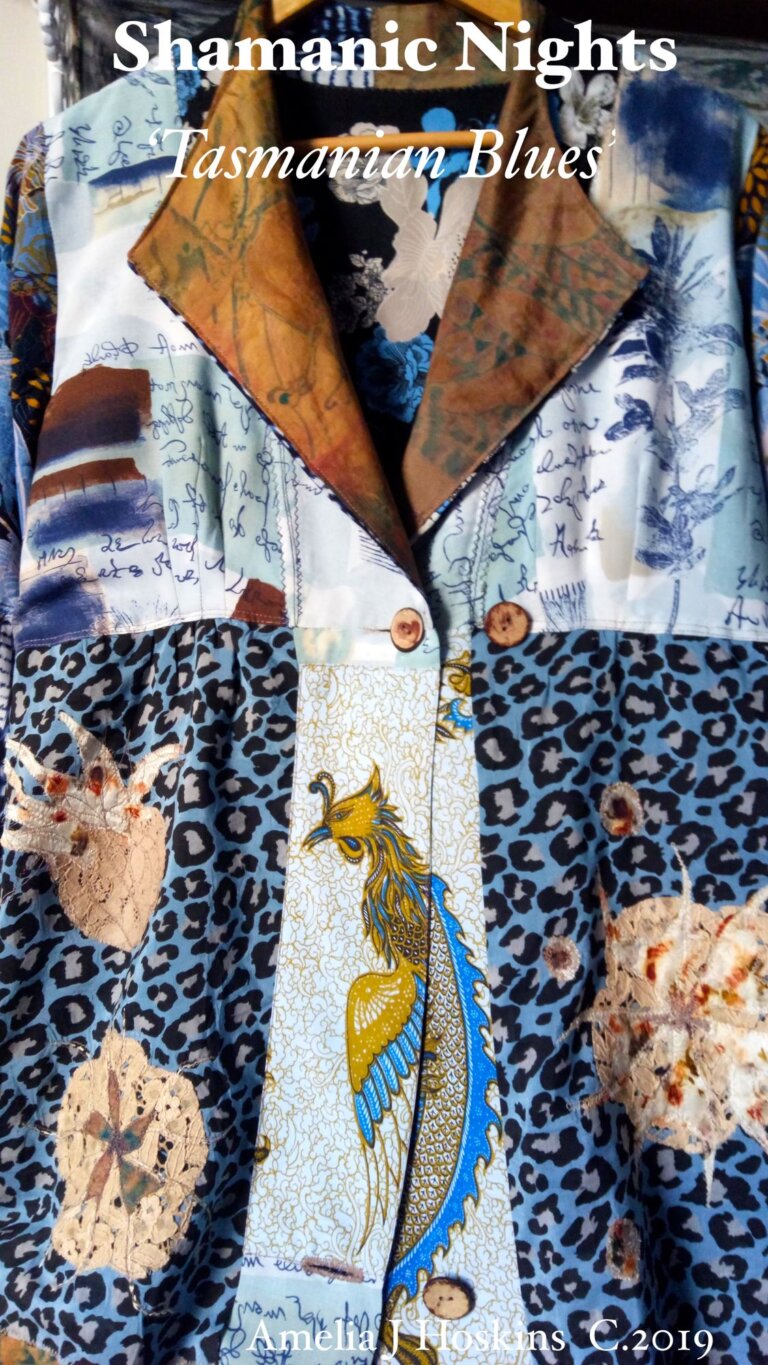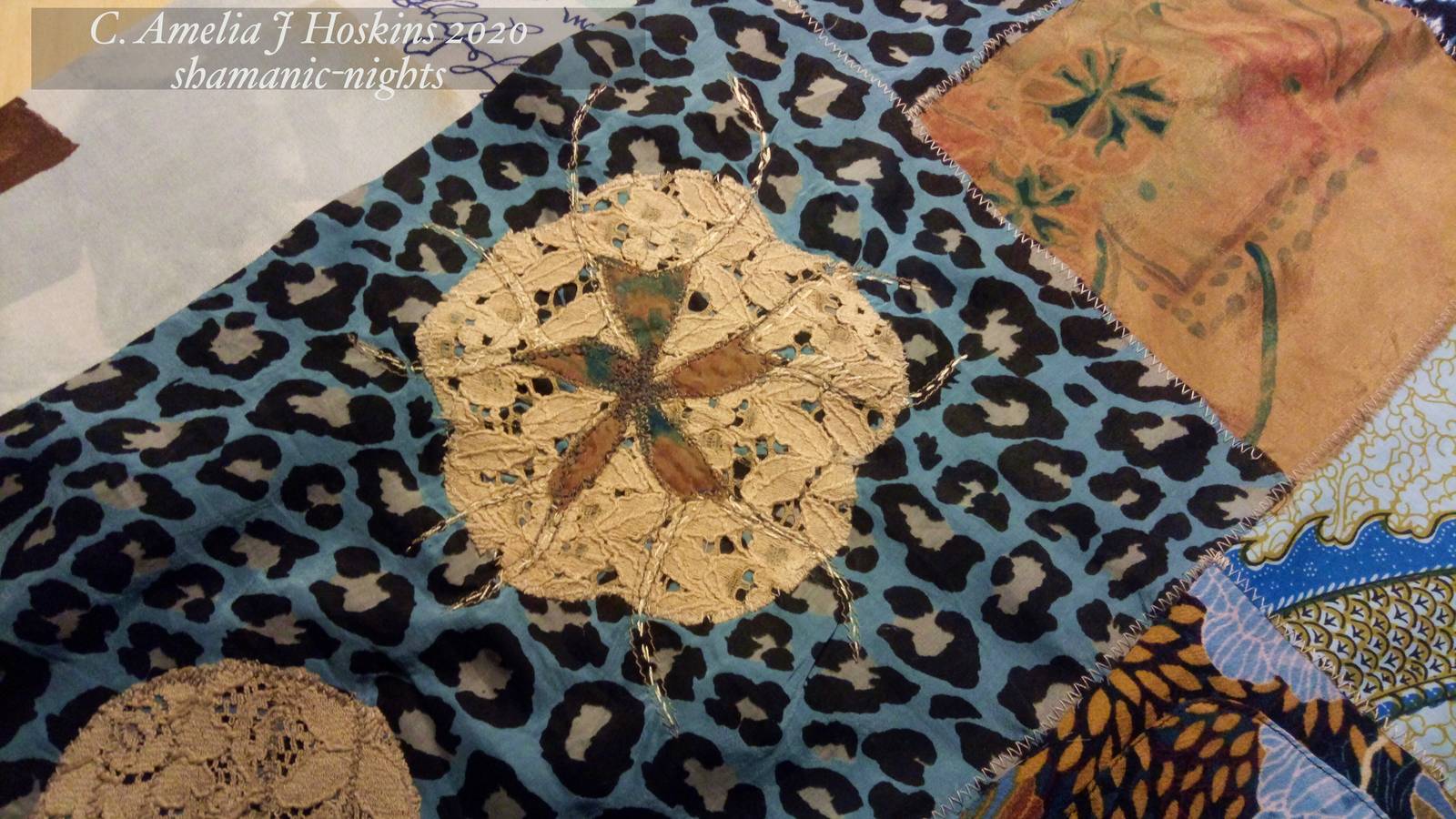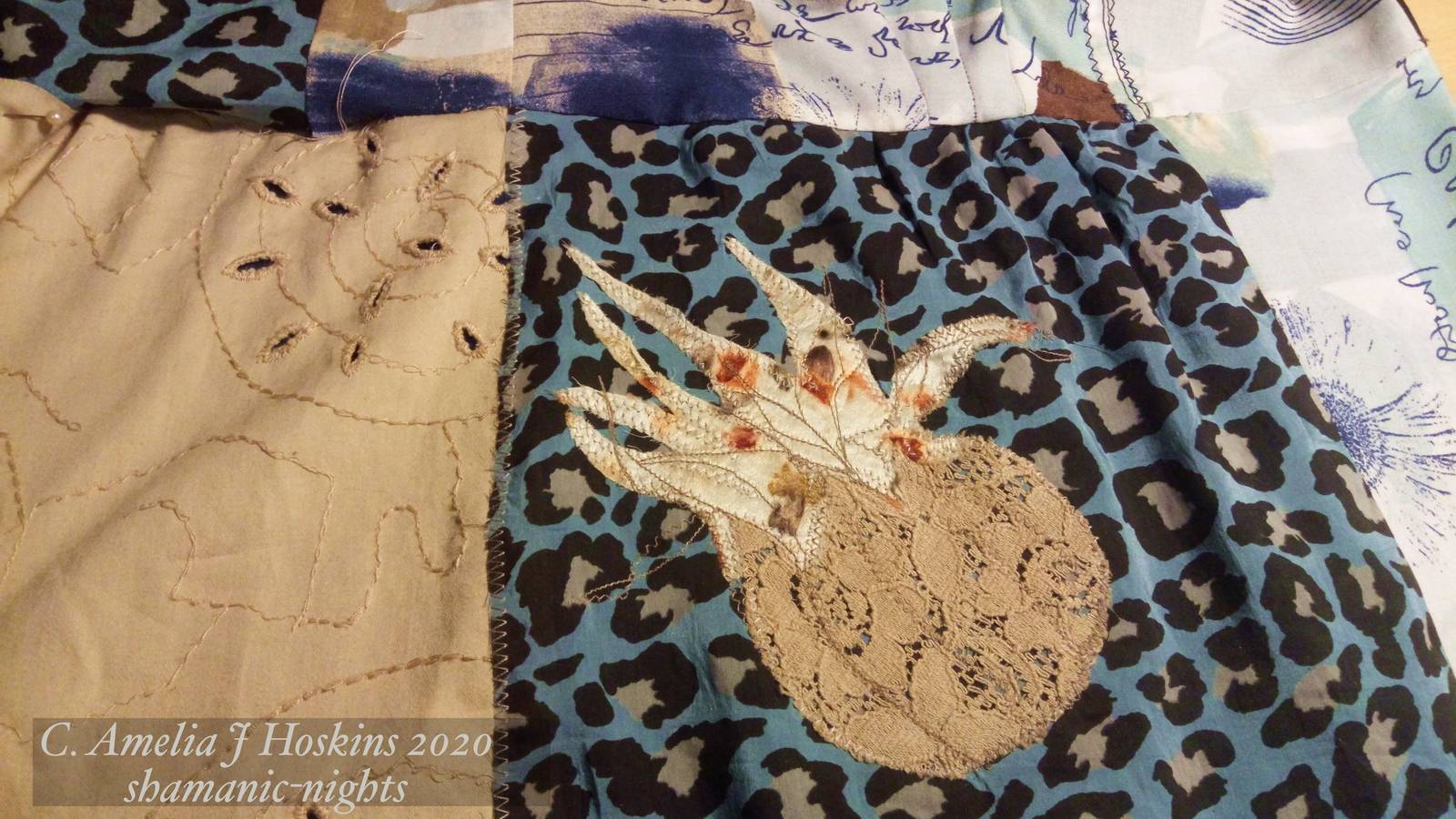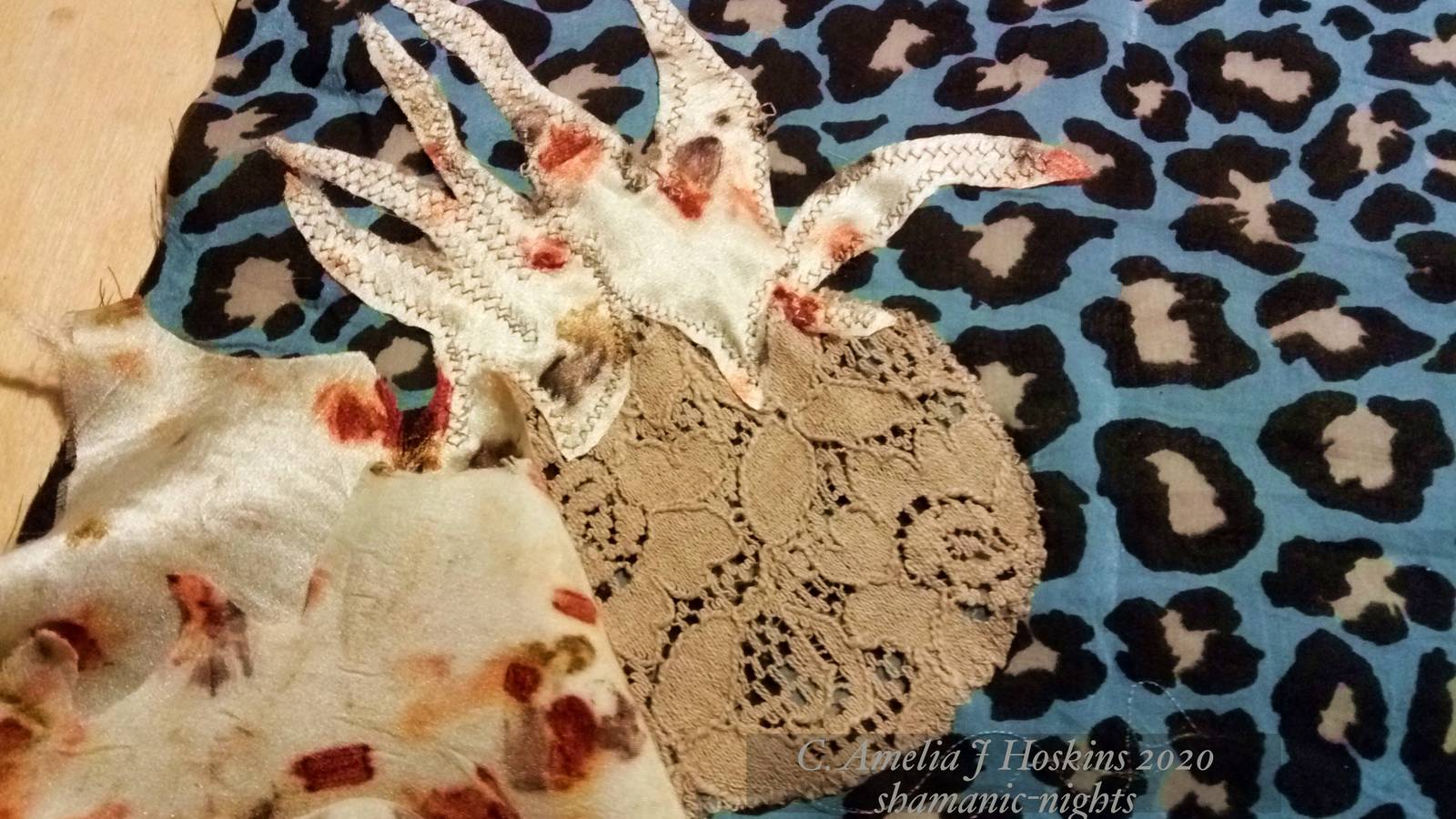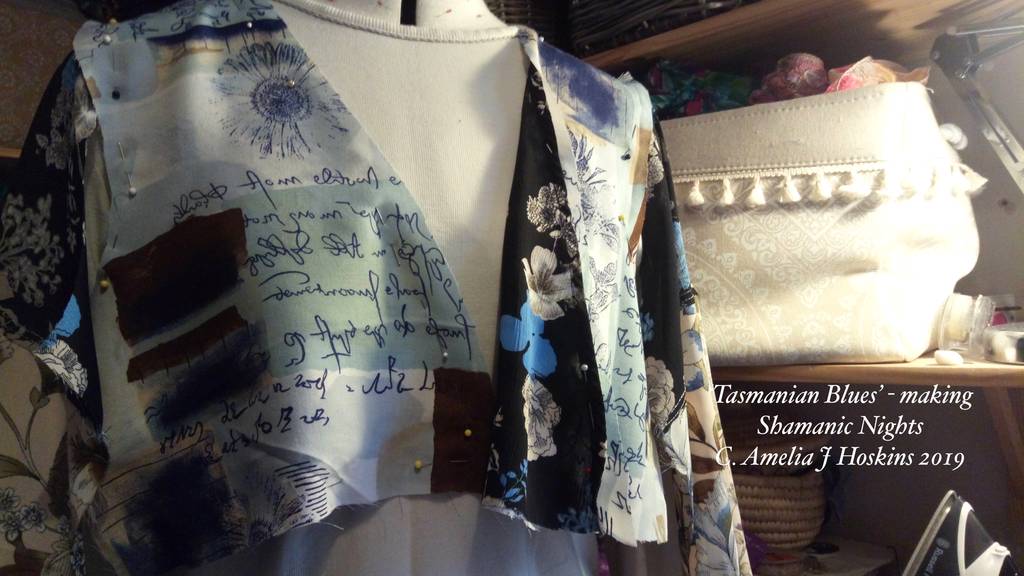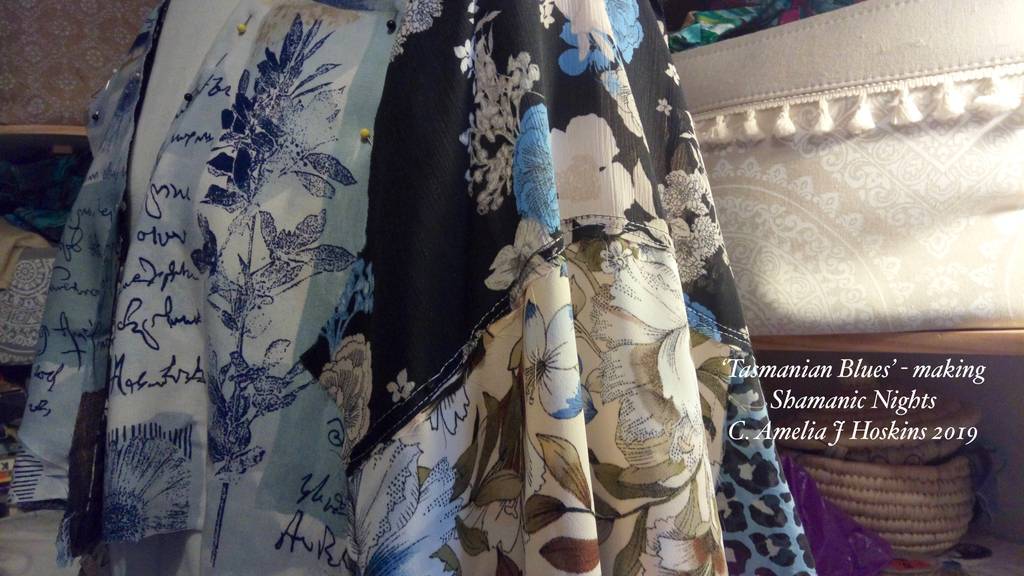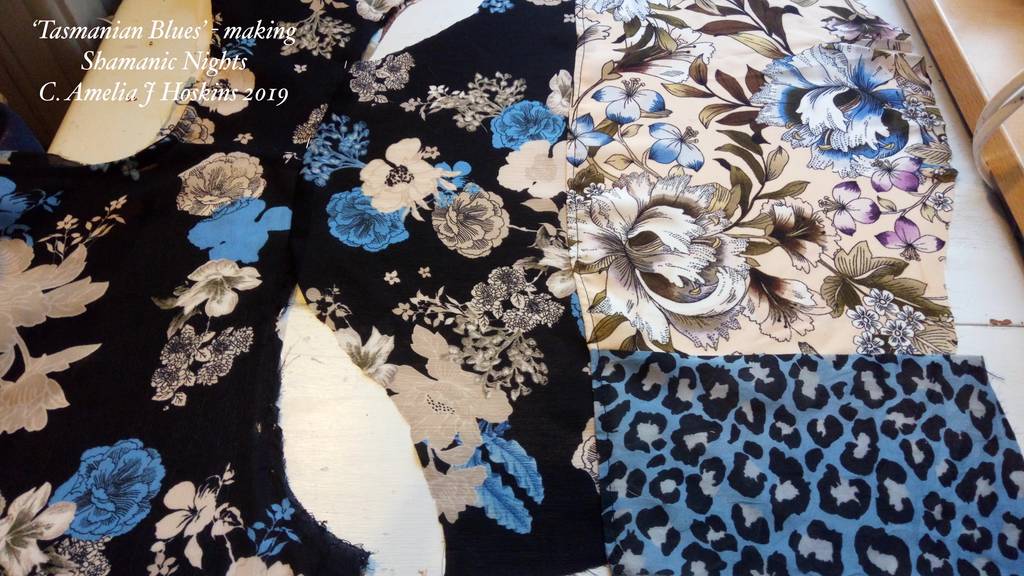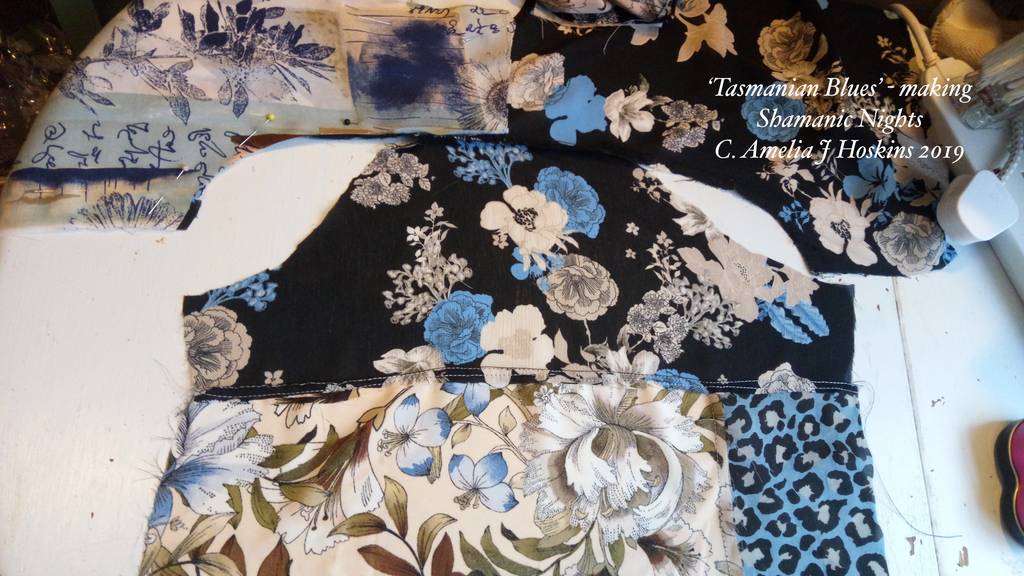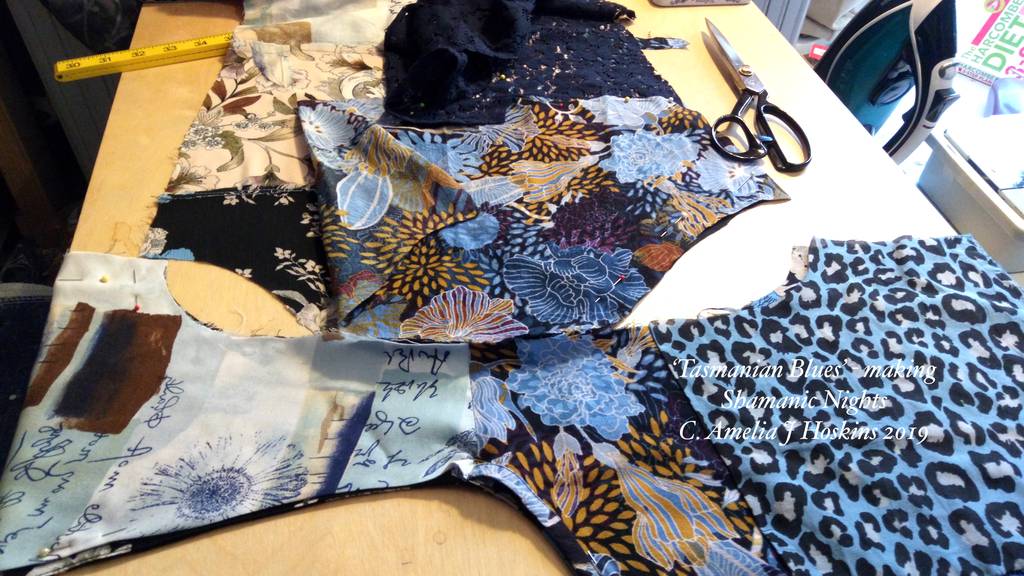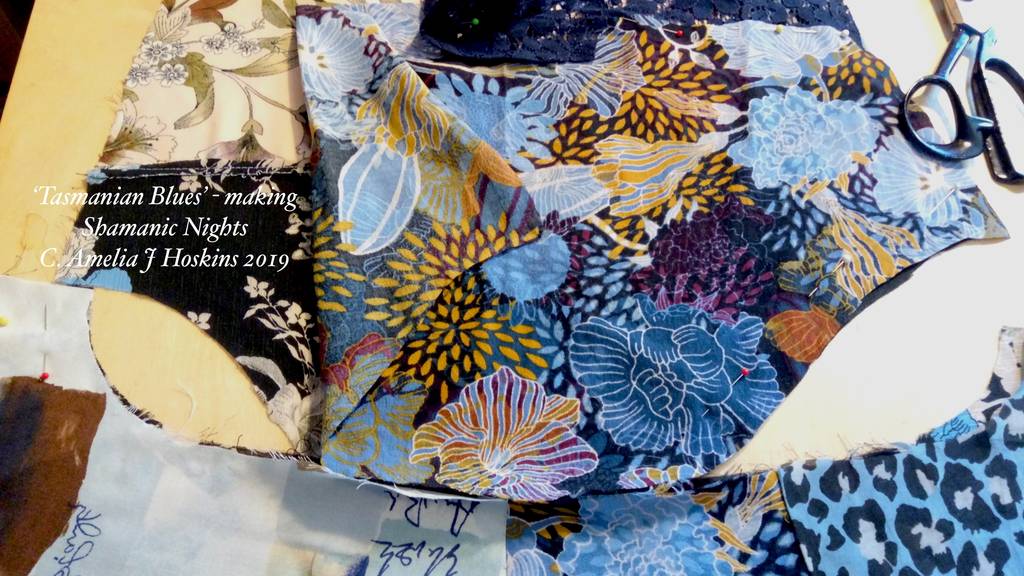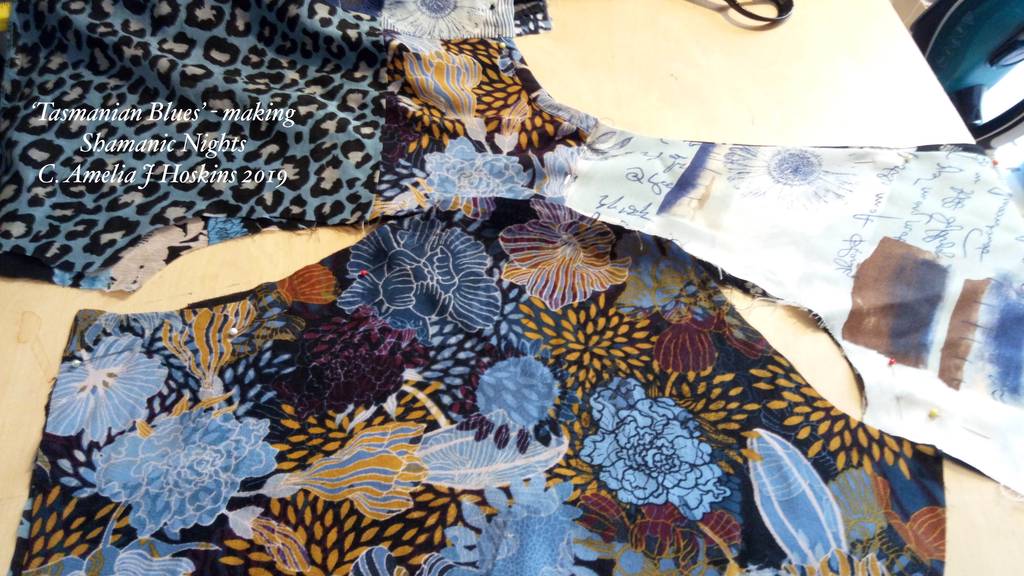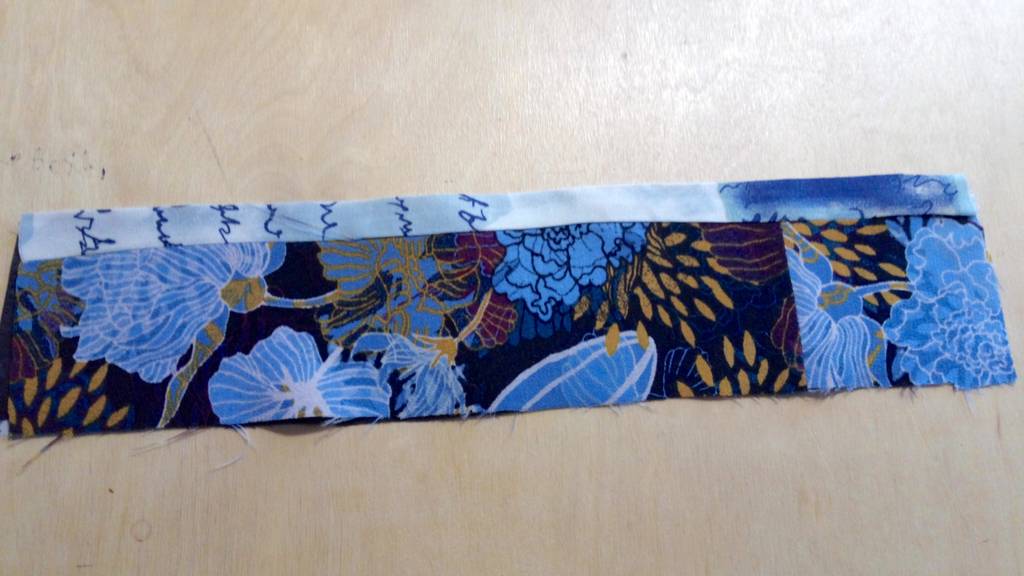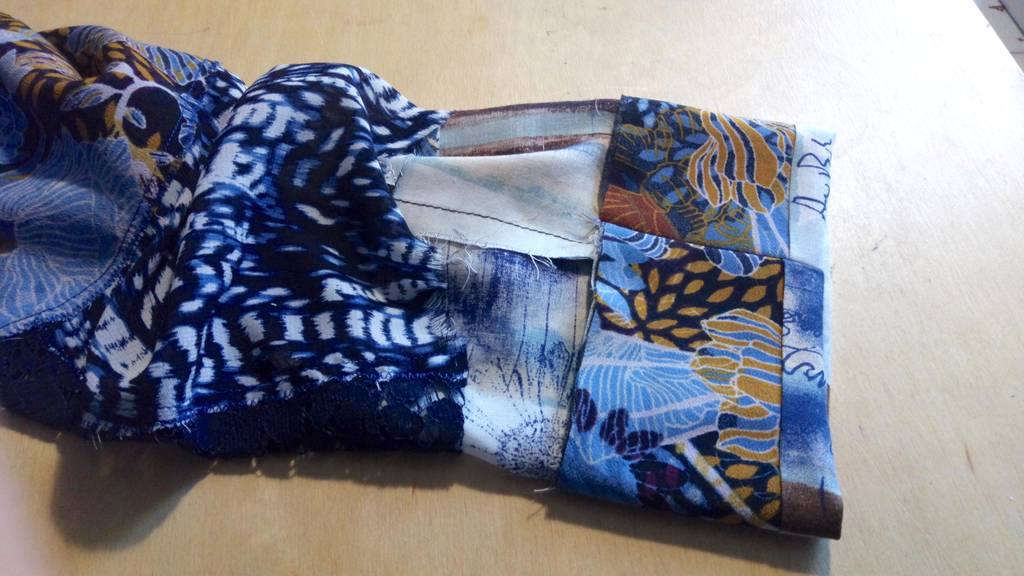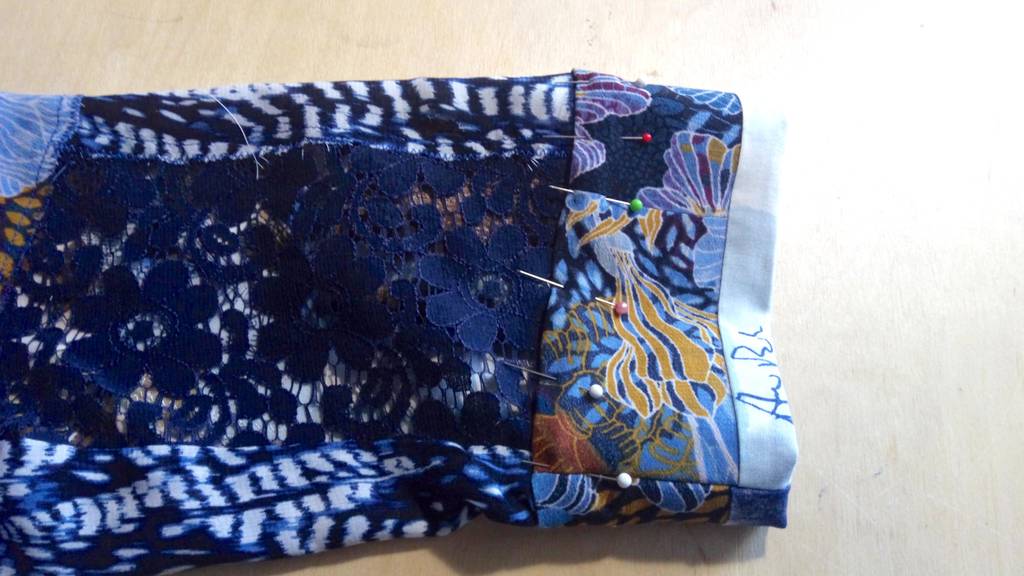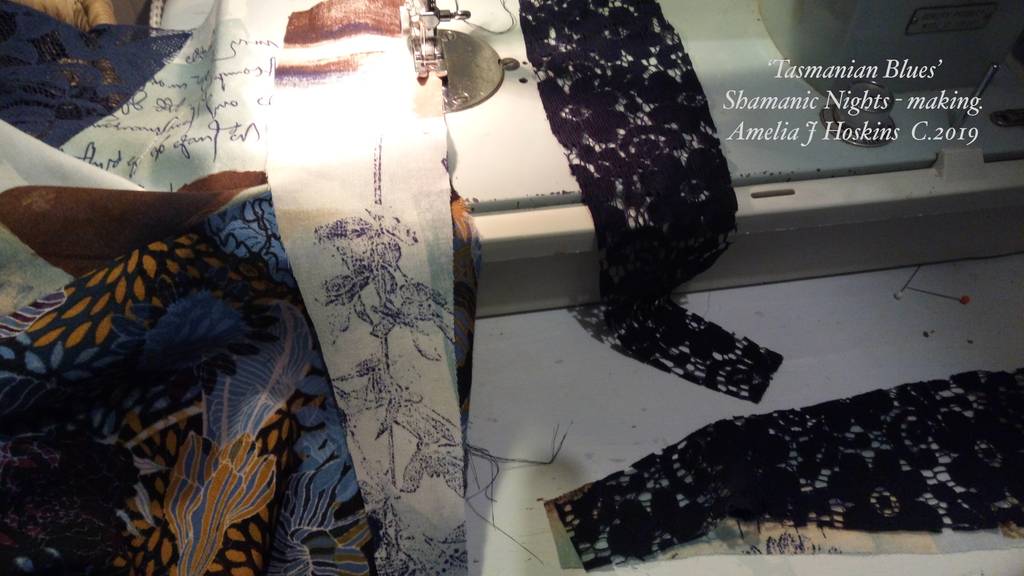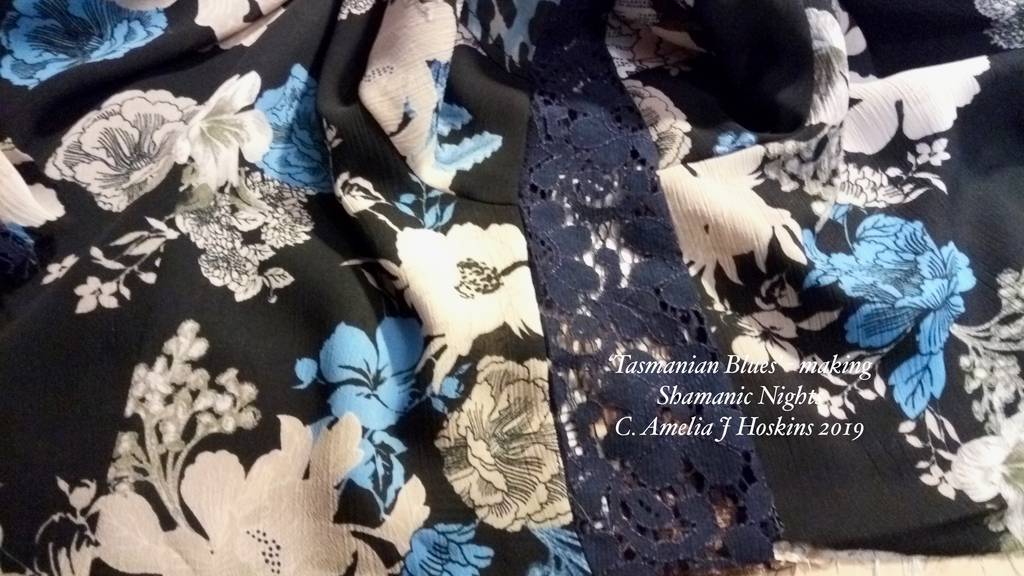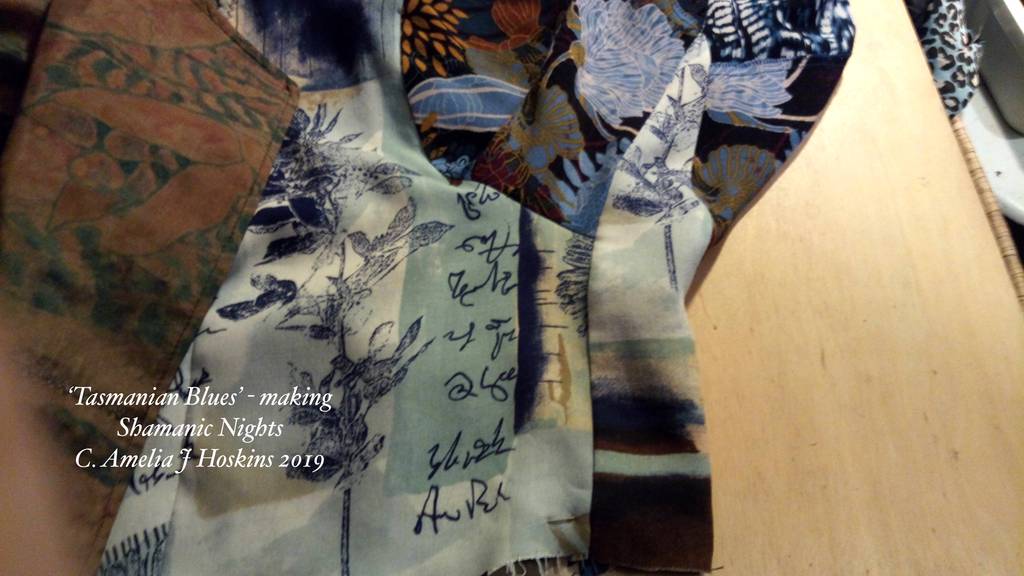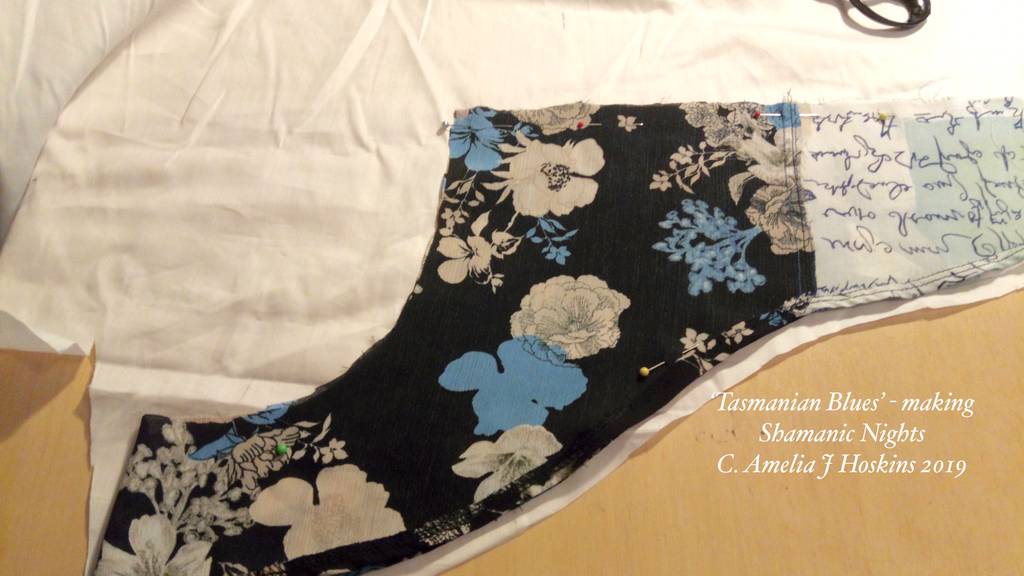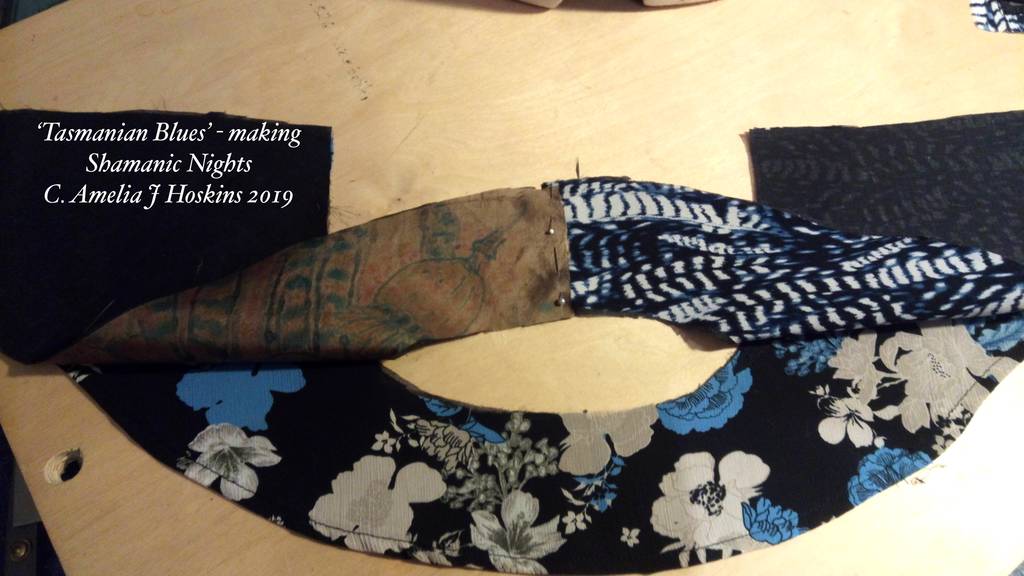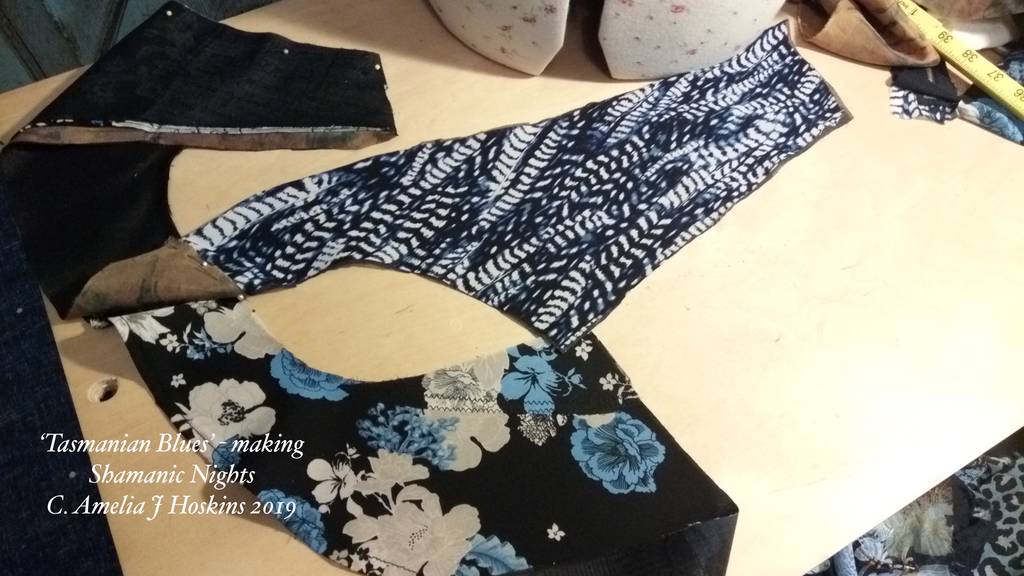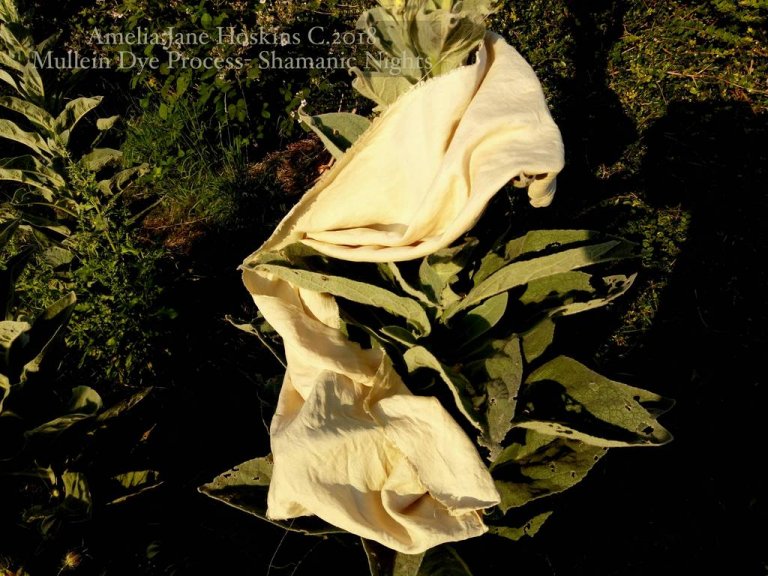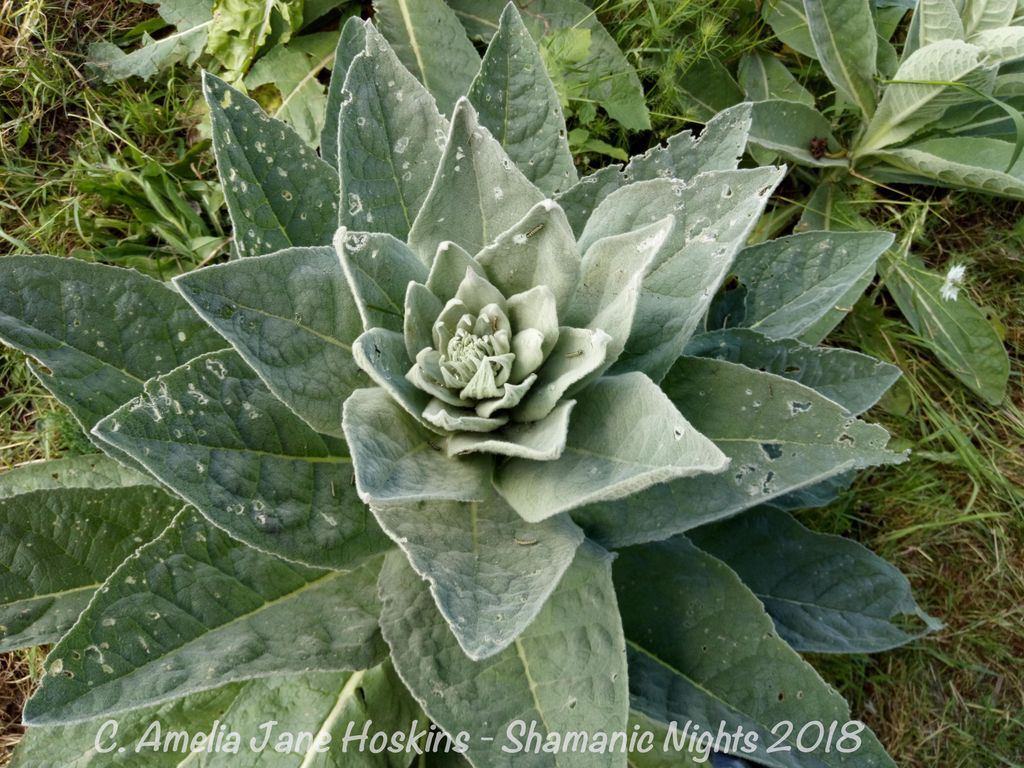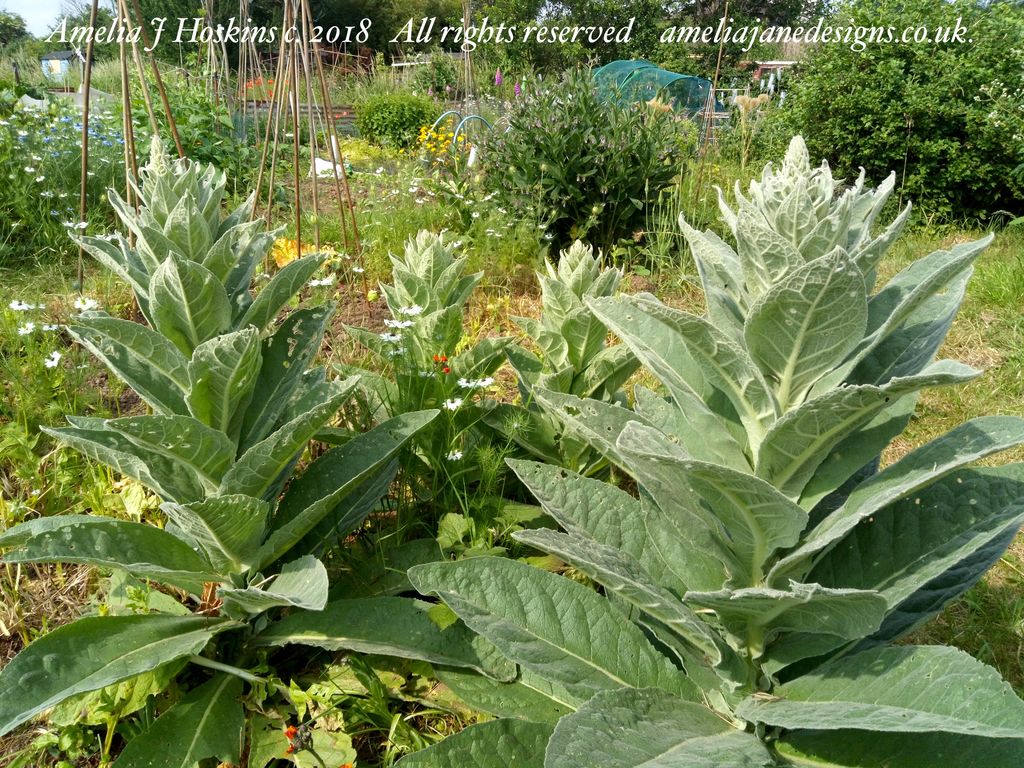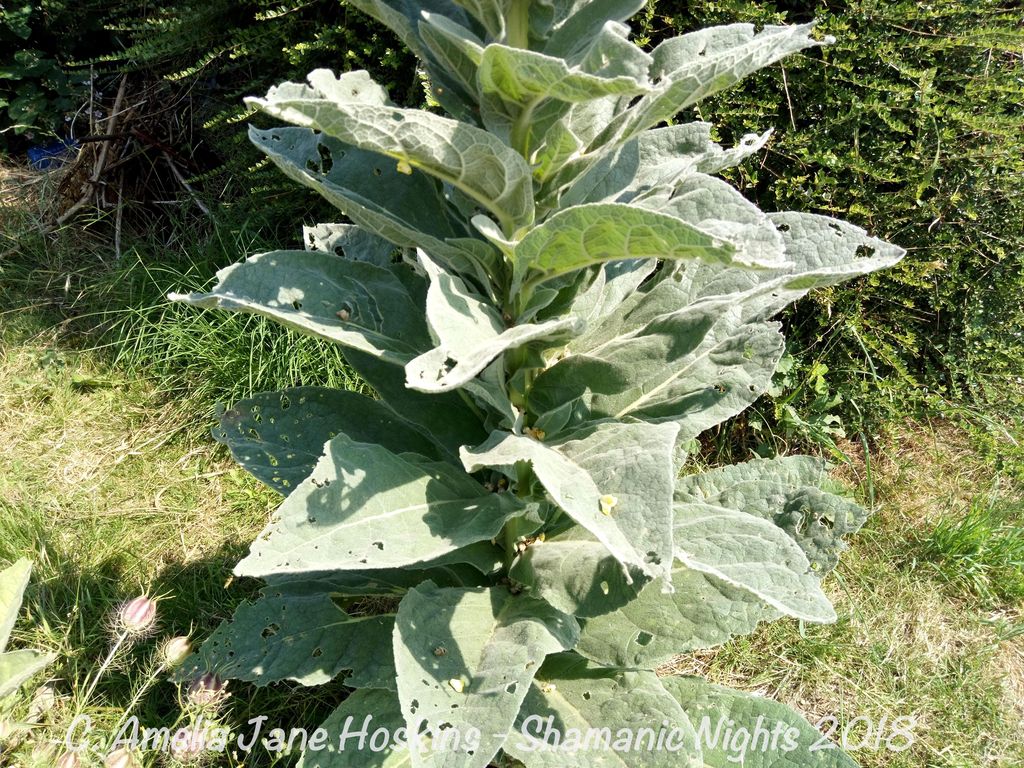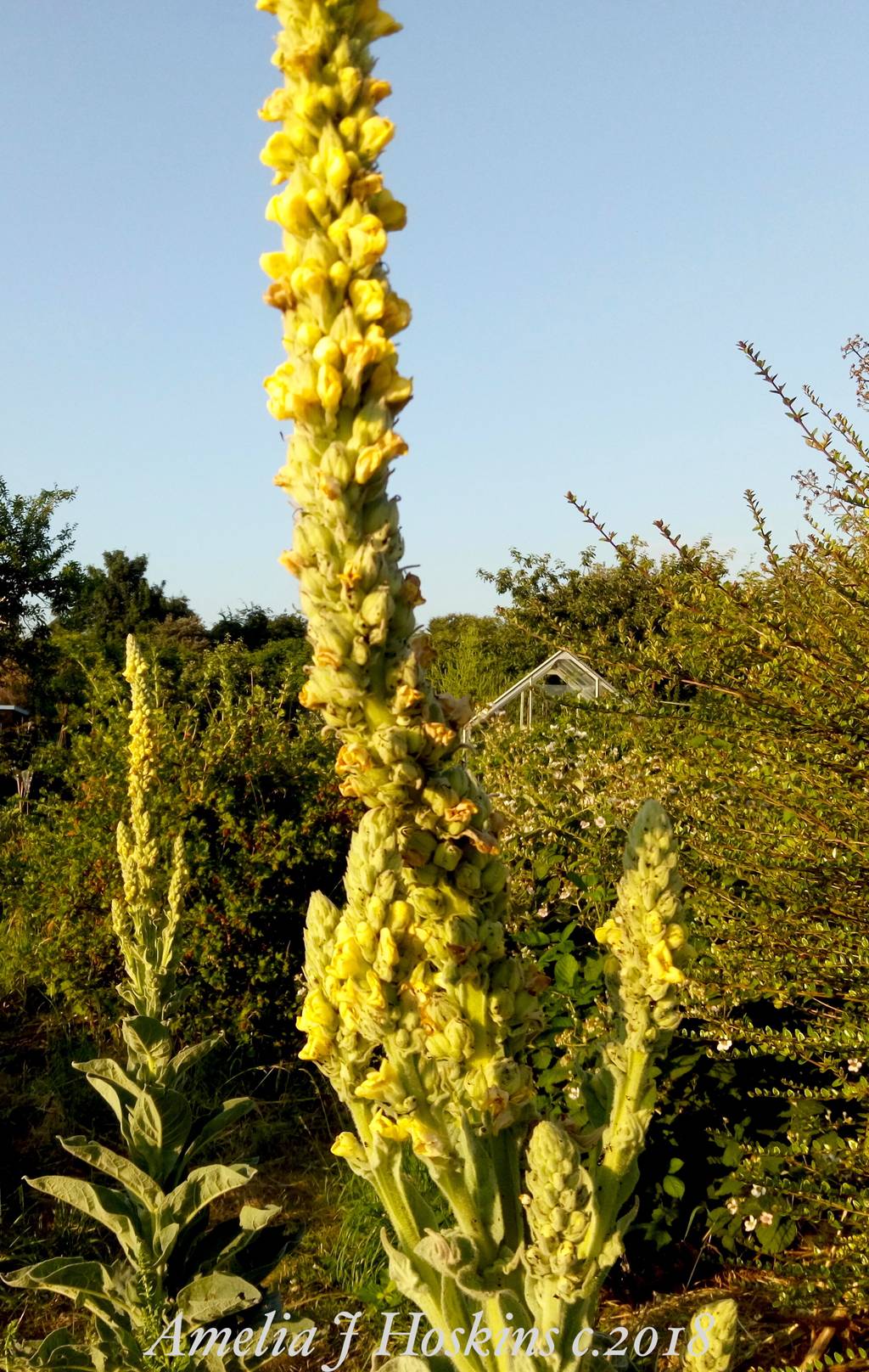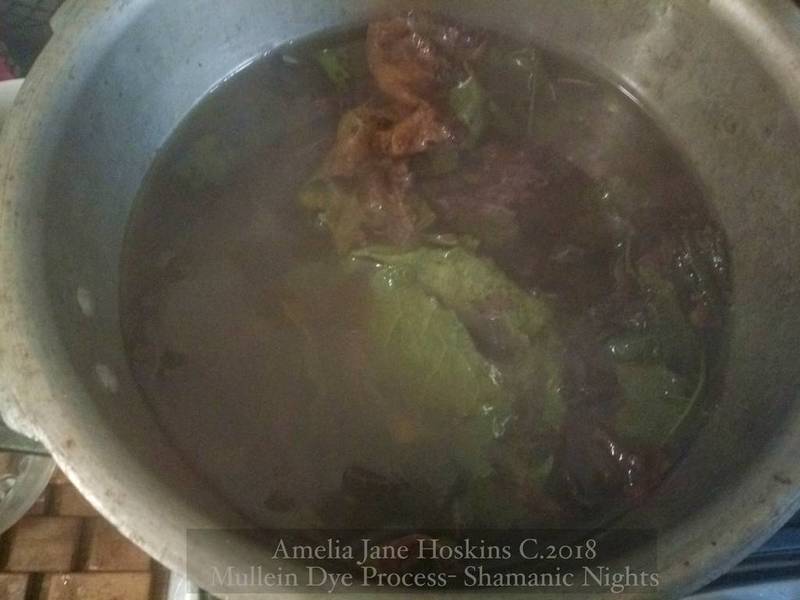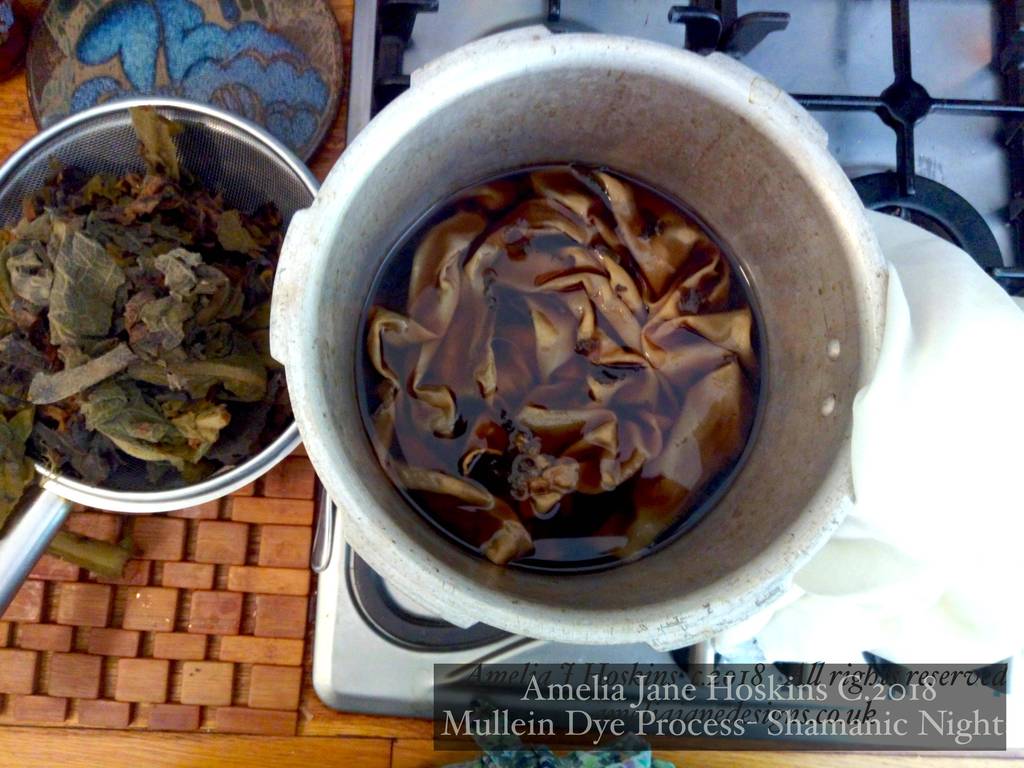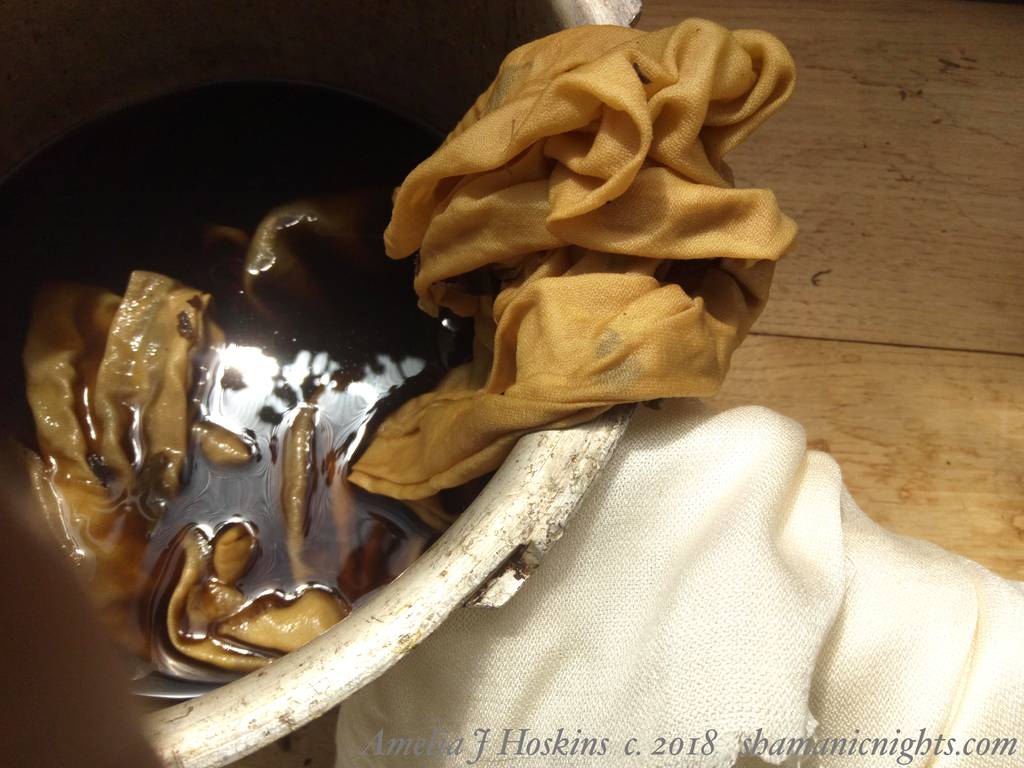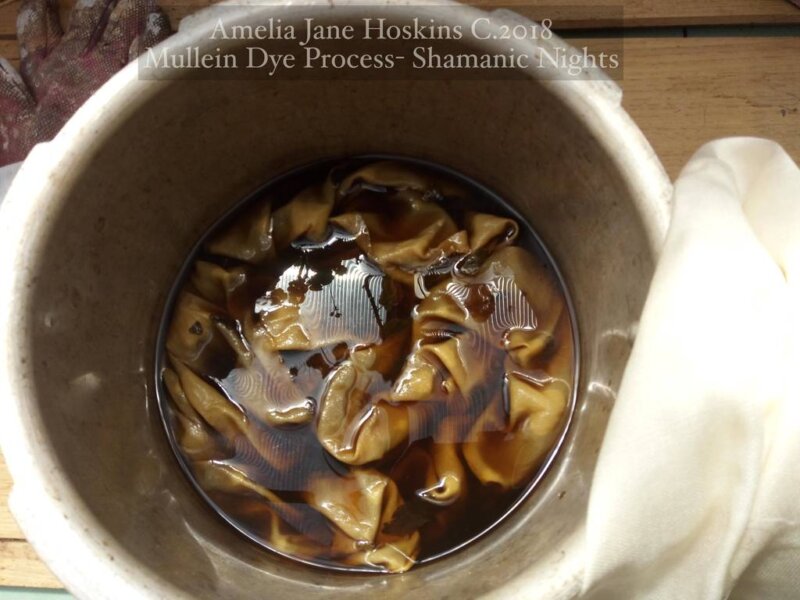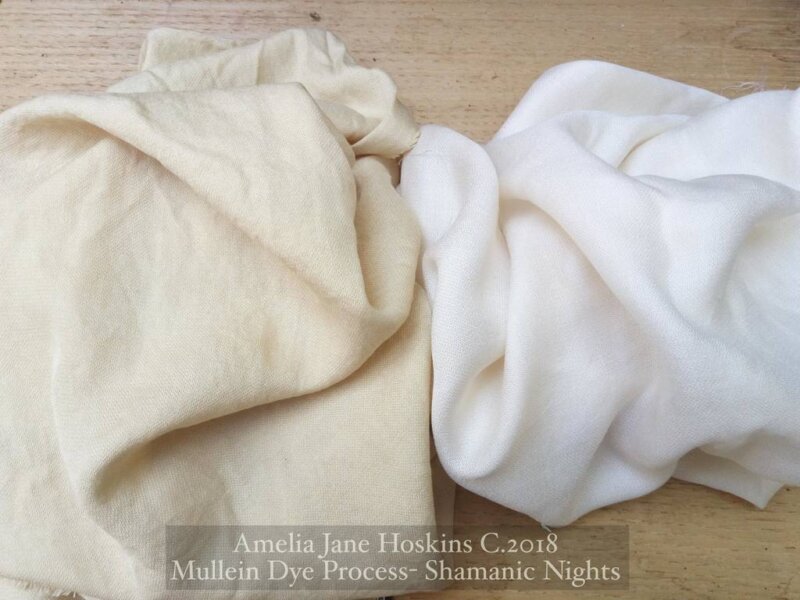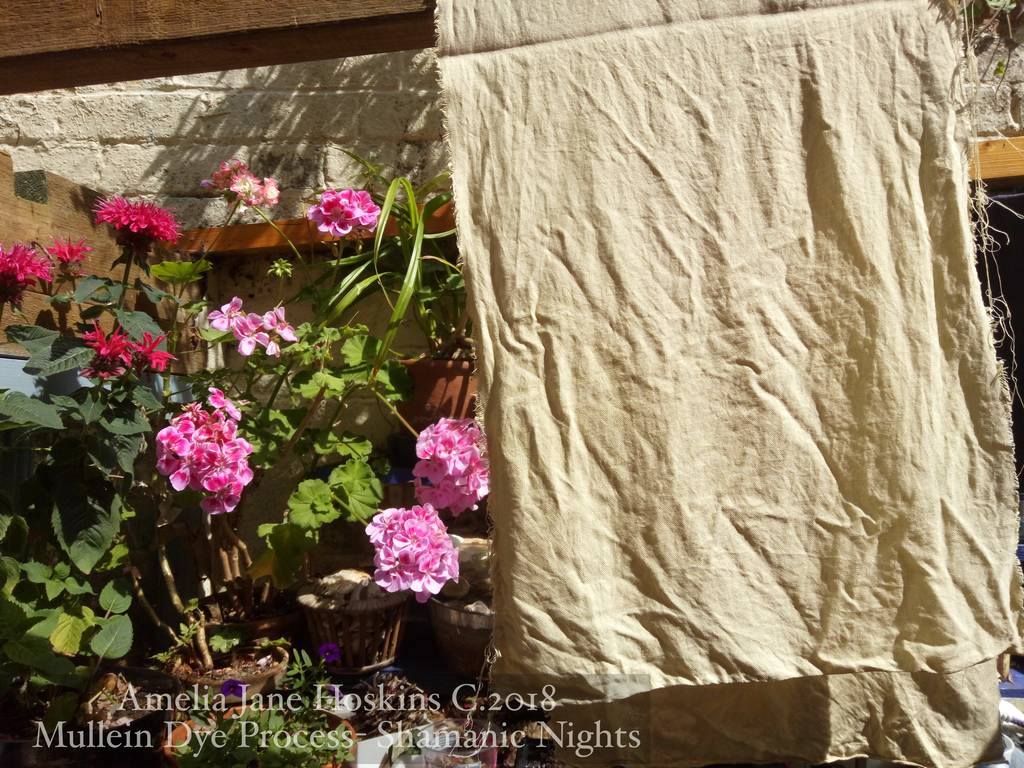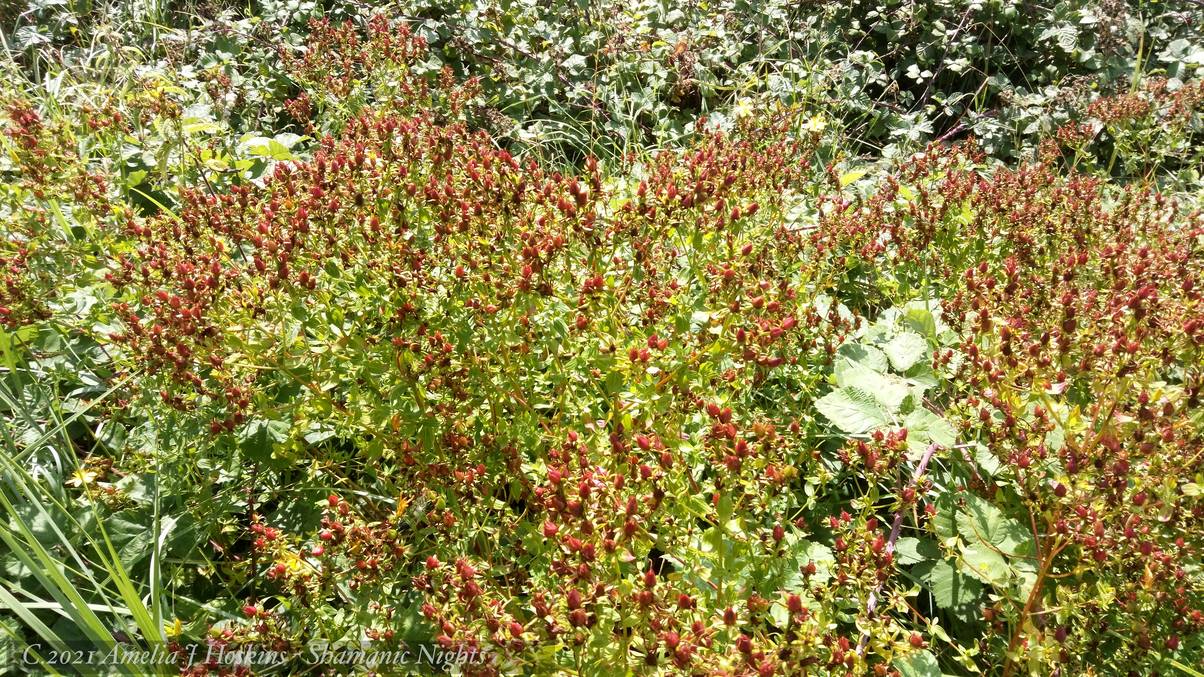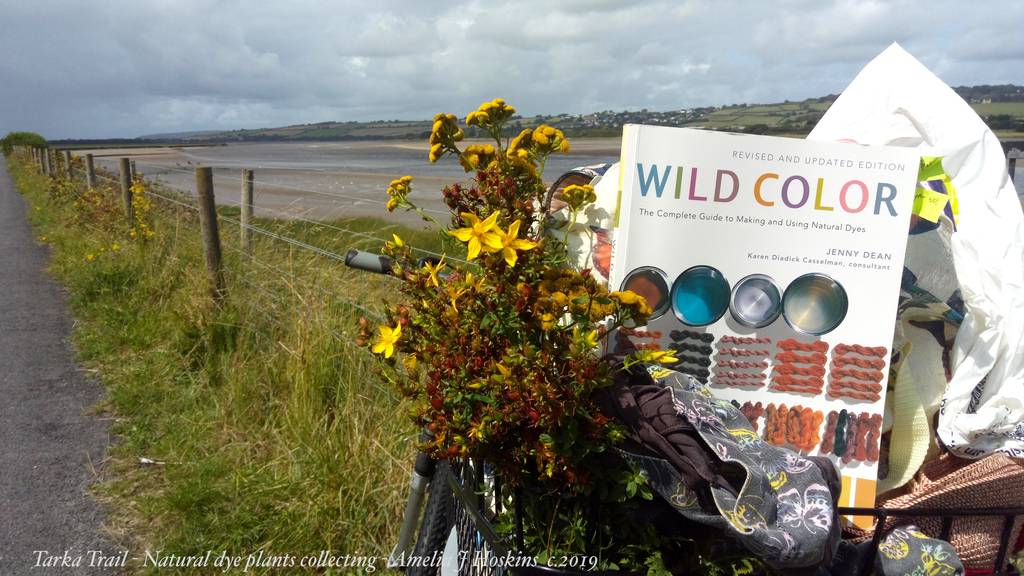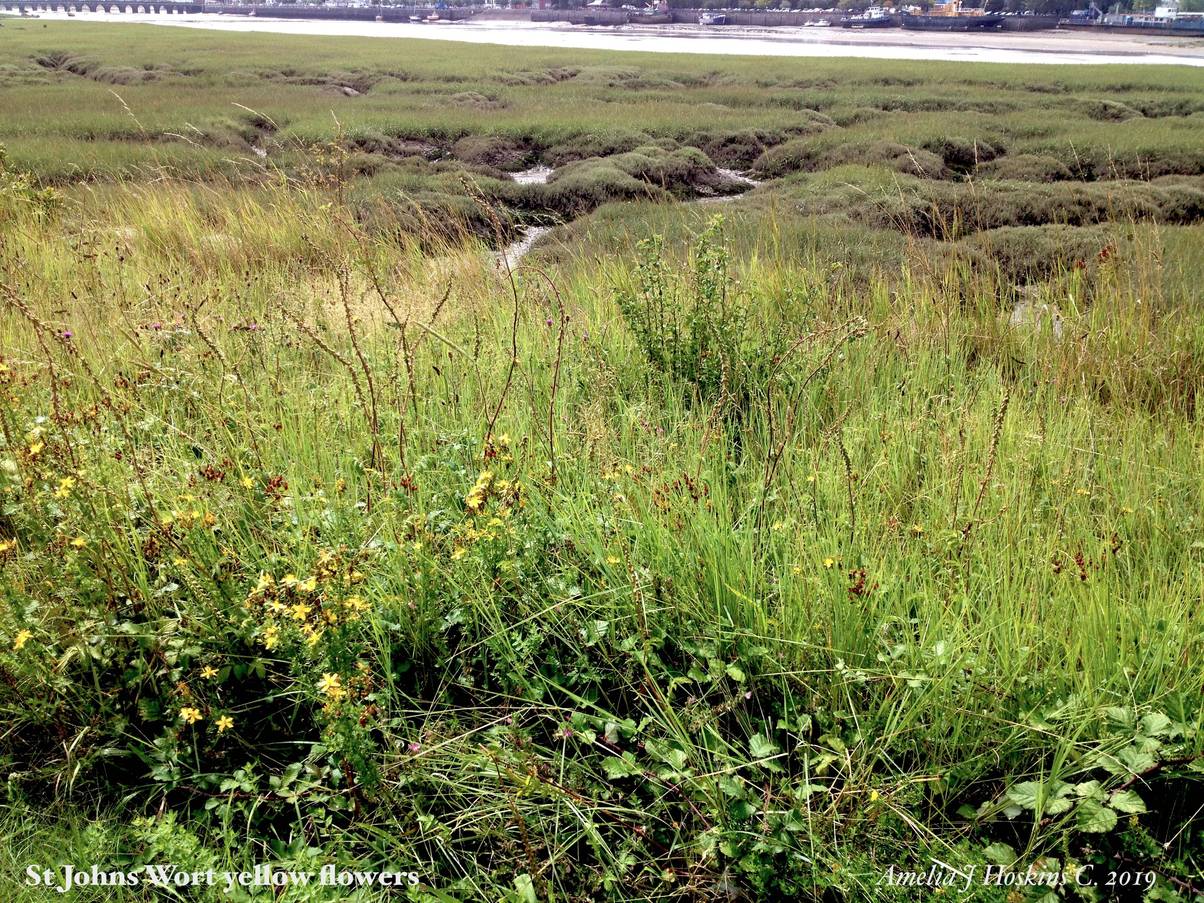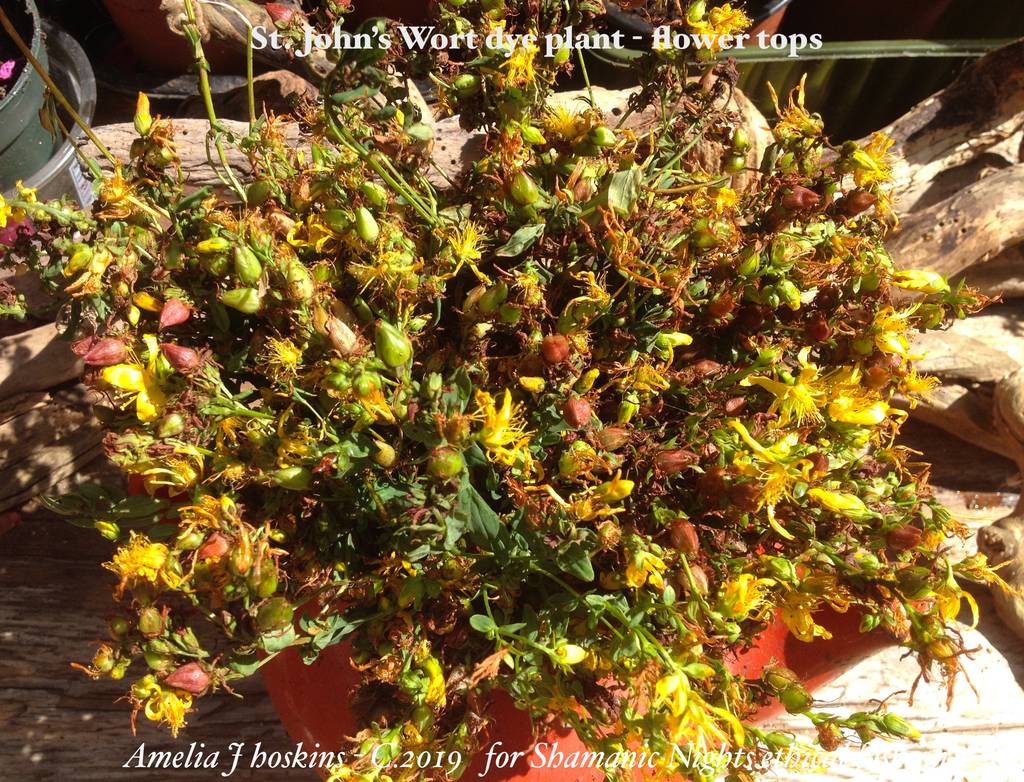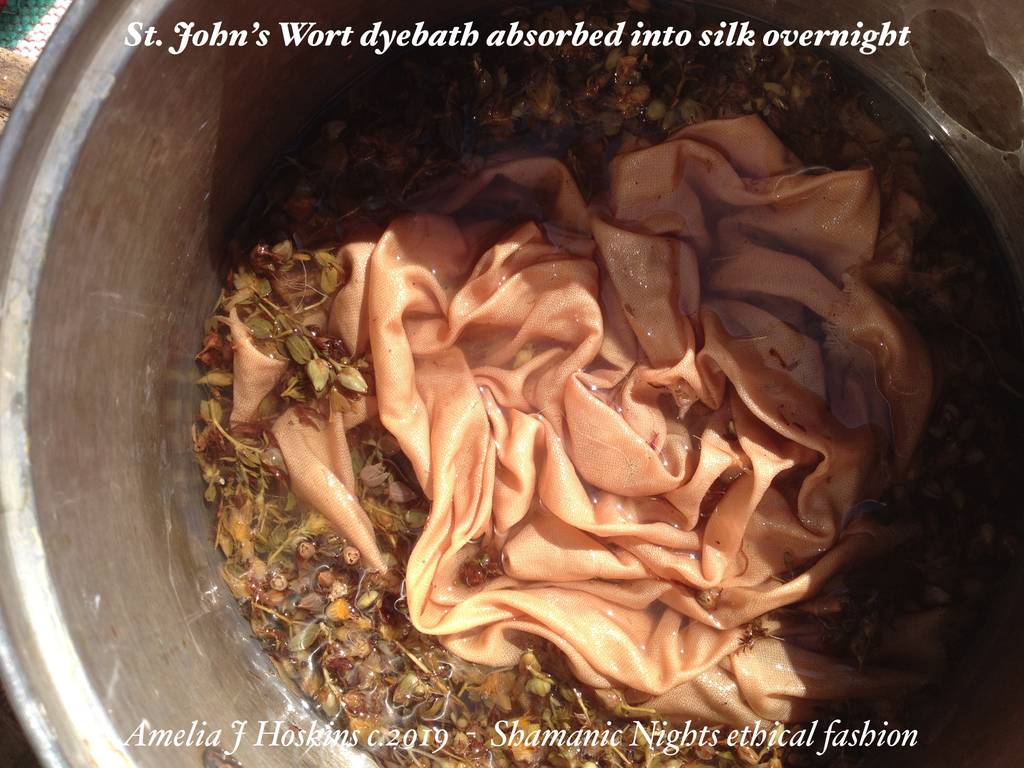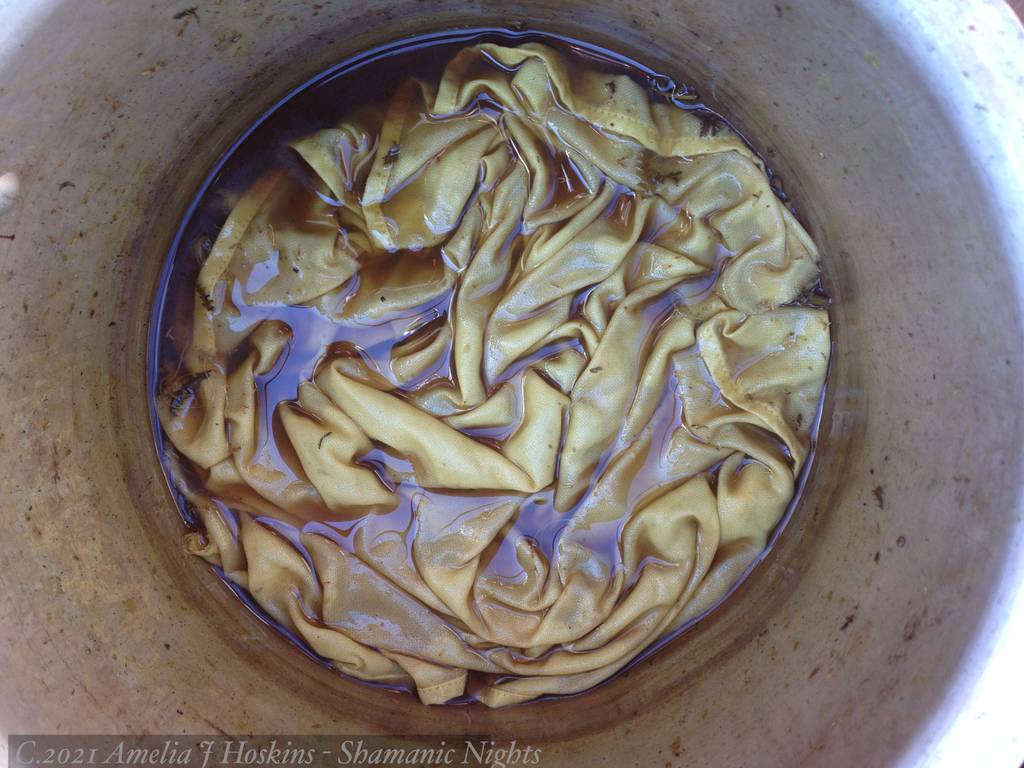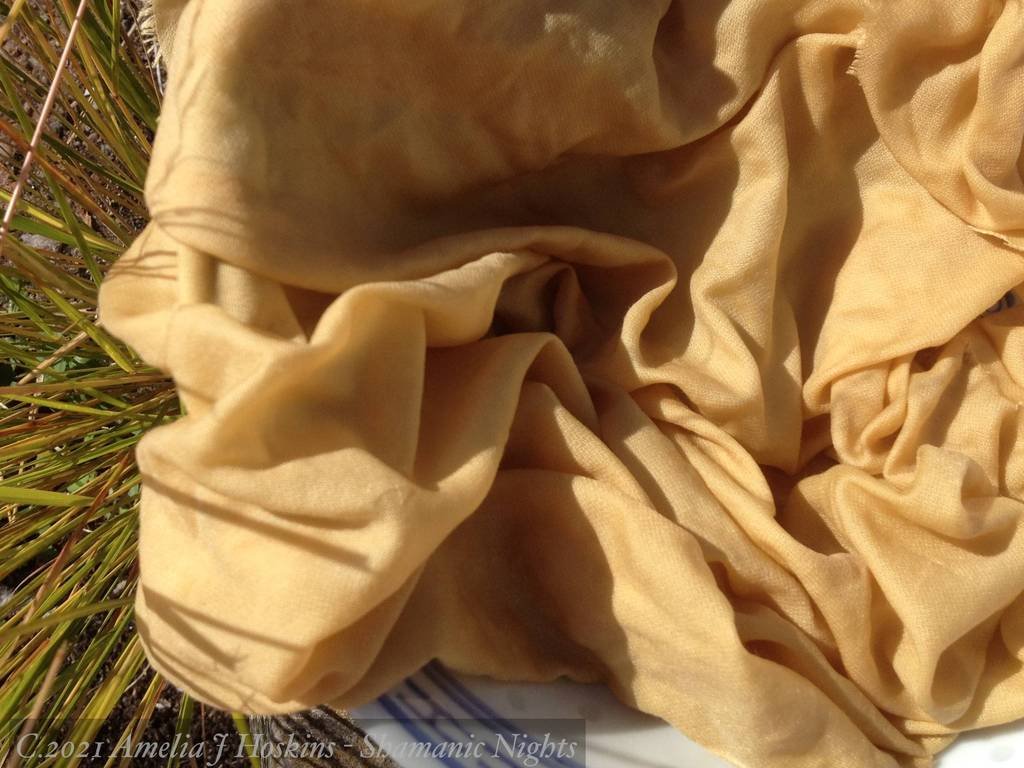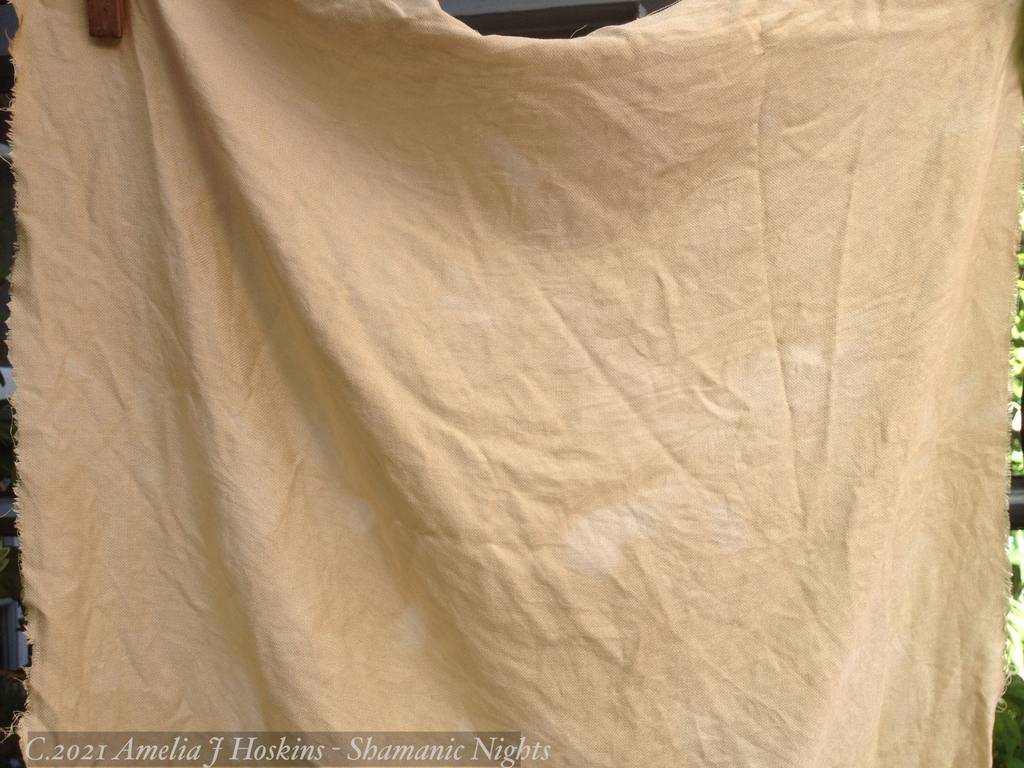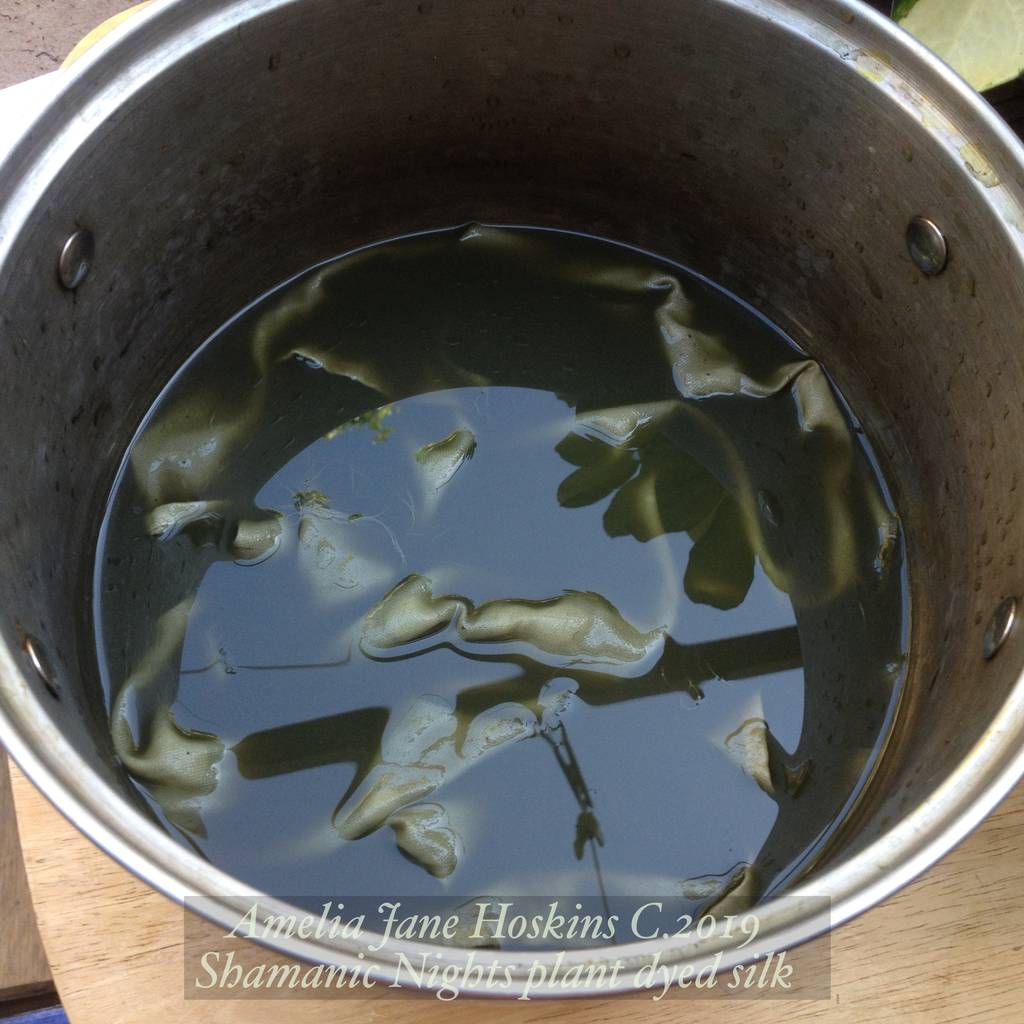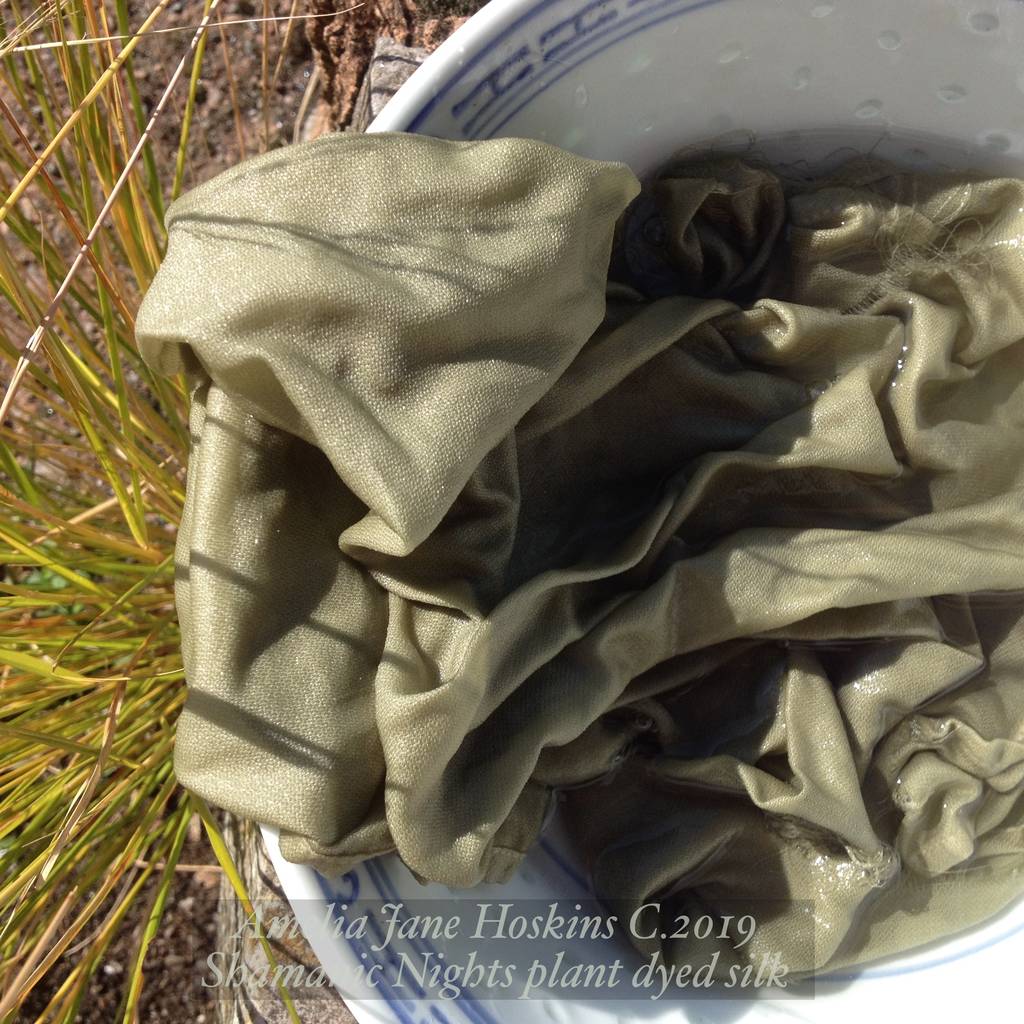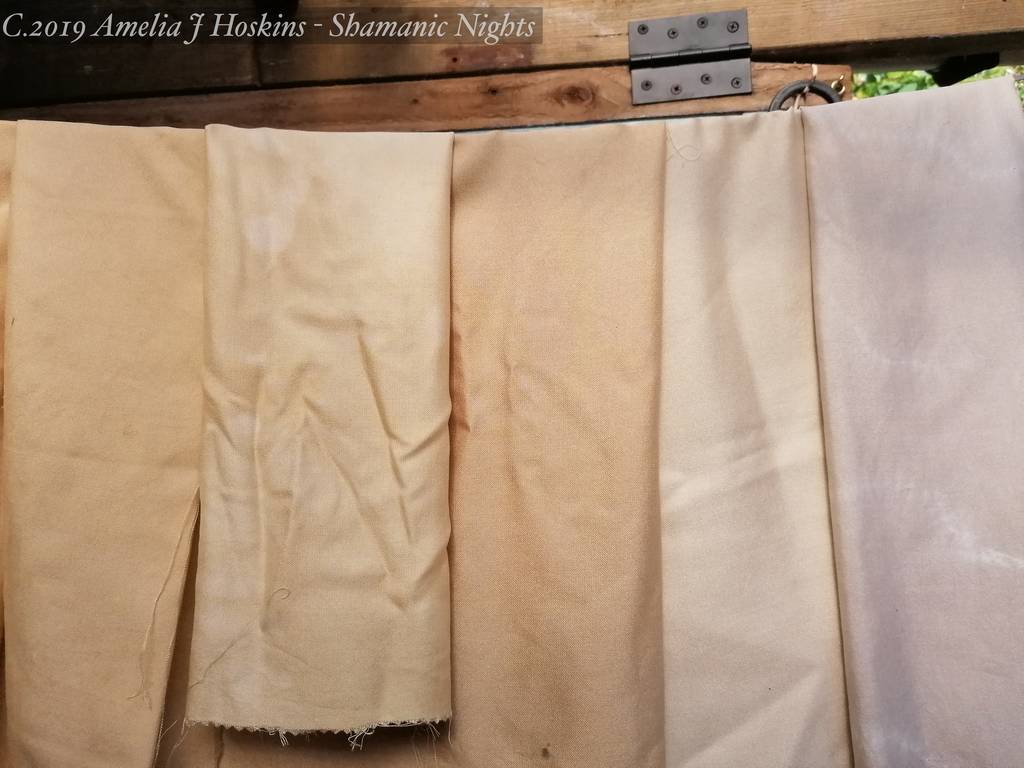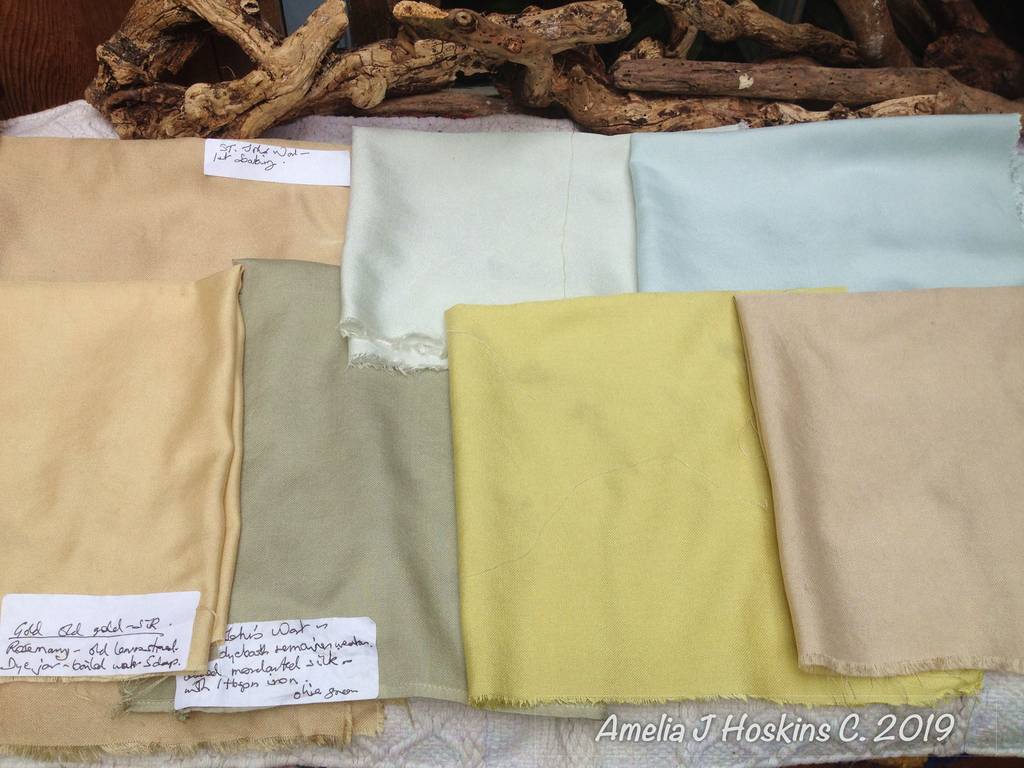Tasmanian Blues Robe Dress
FEATURES: Collar is of hand dyed silk, from natural Tasmanian eucalyptus tree bark dye then painted over. Silk sample designs see here. [add link]
APPLIQUE DECORATION: Nigella Seed pod designs from my drawings of dried seed pods in my vegetable garden: see seed photos on photography site resonant-visions Beige lace has a similarity to the thin casings of the pods as they break down.
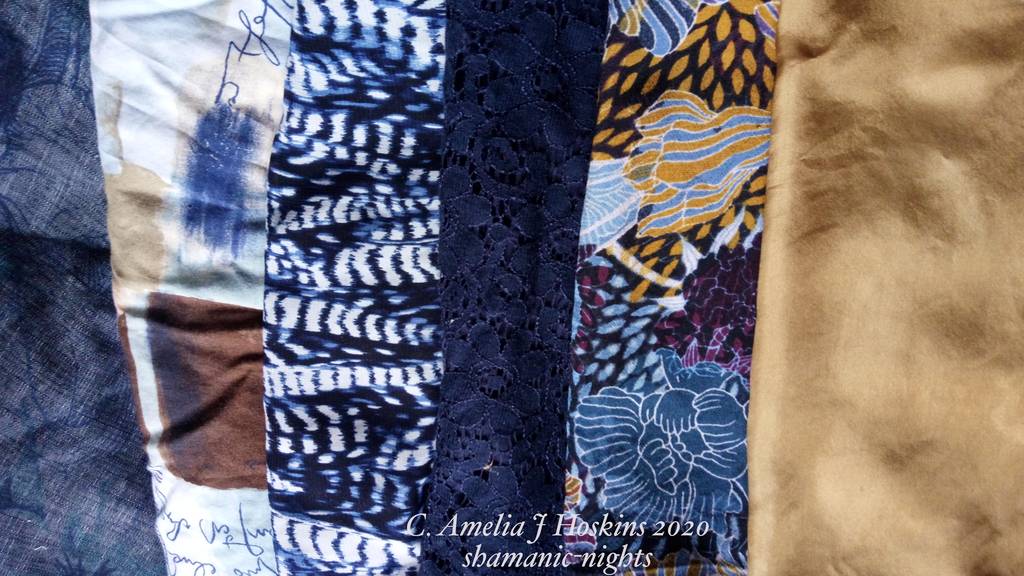
BLUE Patchworks
Abstract with text print blue/white cotton-viscose.
Feather print navy-white cotton.
Navy blue lace lined on gold.
Stylised flowers blue-gold-navy cotton print.
Gold embroidered cotton.
PLUS : Gold plant dyed silk. Leopard print blue-black-grey. Chinese Bird of Paradise with gold texture cotton.
Applique - Seed Pods of Nigella 'Love in a Mist'
Robe Dress has applique lace pod dyed in eucalyptus dye bath after the collar piece. Colour took well, which is a guide to fabric content being cotton or silk. Dark centres to seed pod designs are cut from eucalyptus dyed silk (iron modified). Light centre to pod is from bundle steam died silk with seeds and petals. Nigella blues has variable on same pod idea. A motif is a good means to join over a seam (smock left top). Also provides contrast to break up a solid dark or light area.
Tasmanian Blues MAKING PROCEDURE
Lining fabric (black/blue/cream floral) (interfaced) used as an upper back section to be inserted into a loose neckline. Smart patch colours (with gold dyed silk painting) joined to form facing, which when turned outwards, becomes the open collar. Note 'pointed angles' - when turned right way out, become collar points.
Patch pieces chosen for outer collar. This may be difficult to follow for beginner sewers. Whatever shape is the front of garment (e.g. a basic round neck cut down centre front): this requires a facing fabric, so when top neck is turned out, it becomes a small faux decorative 'collar'. To have a proper back collar would need additional piece inserting around back neck.
